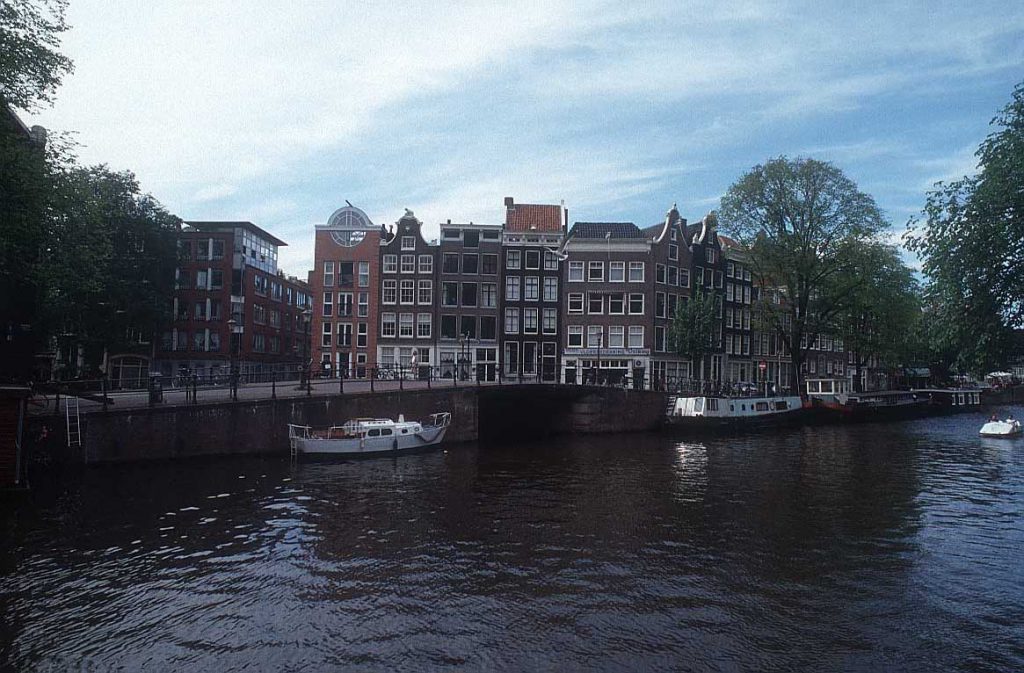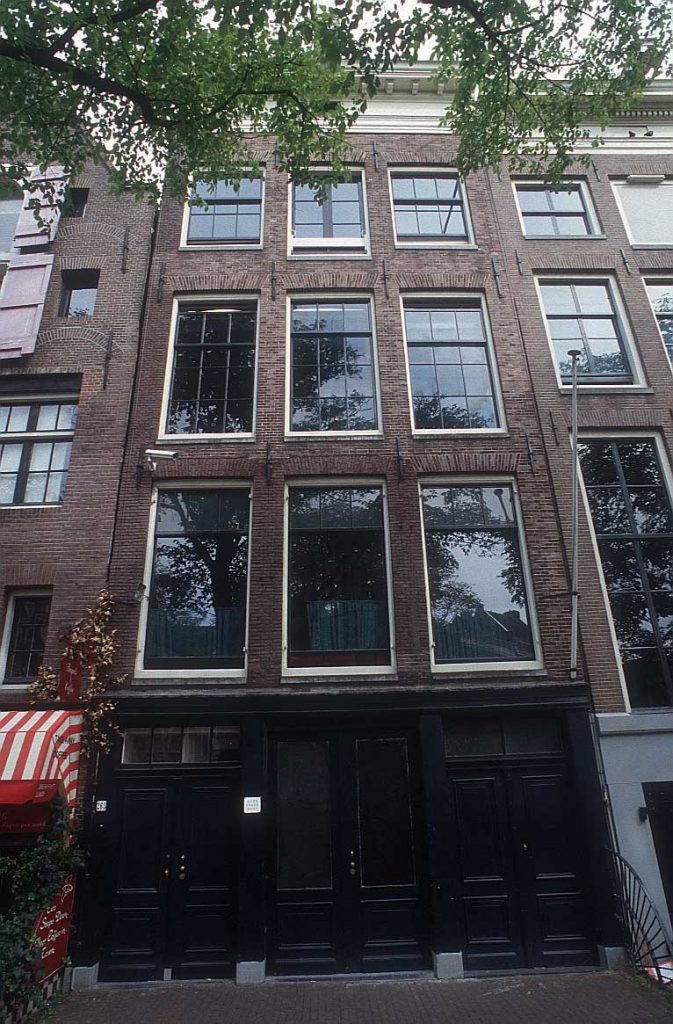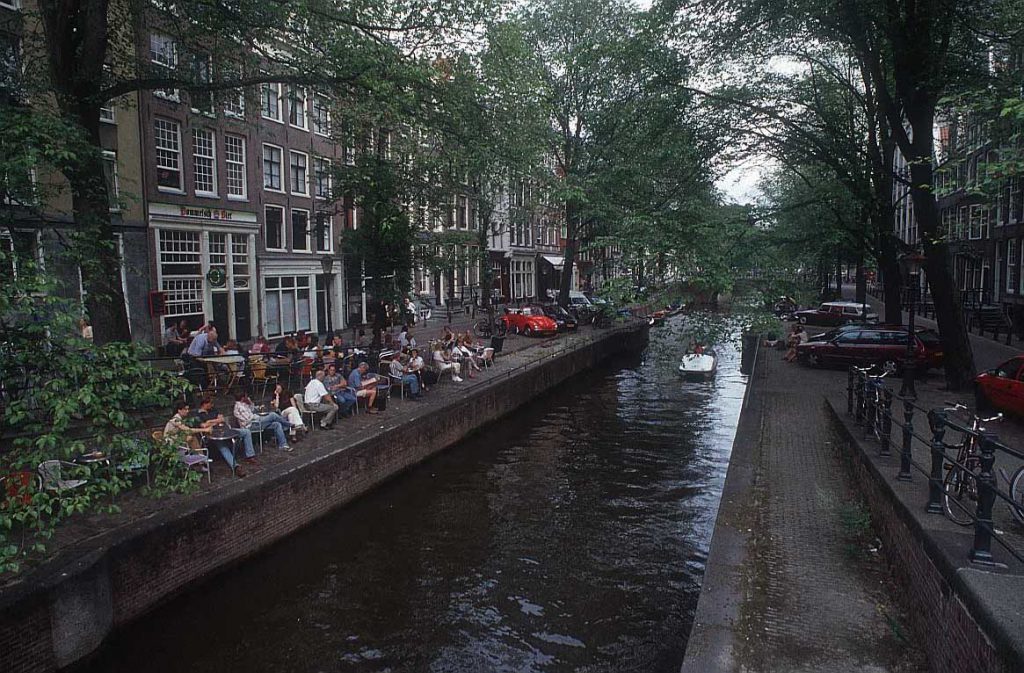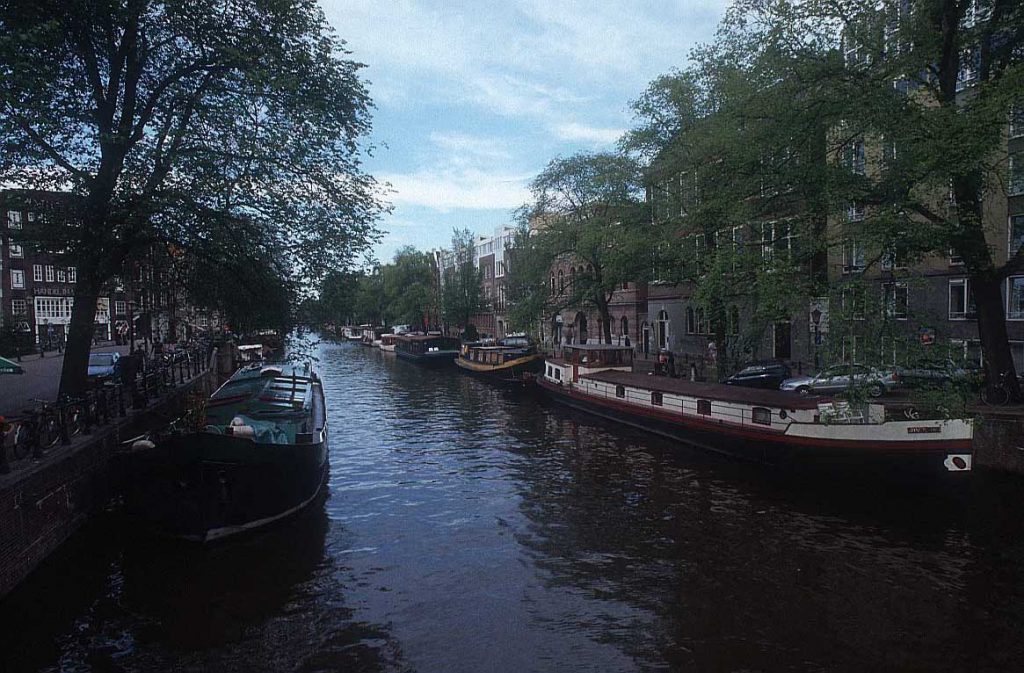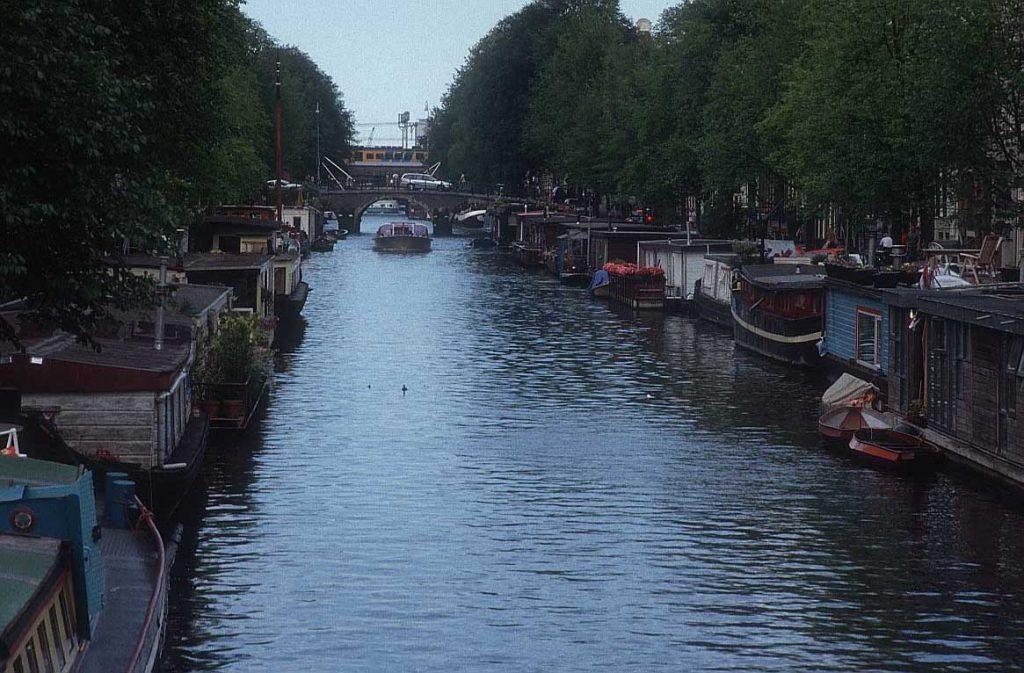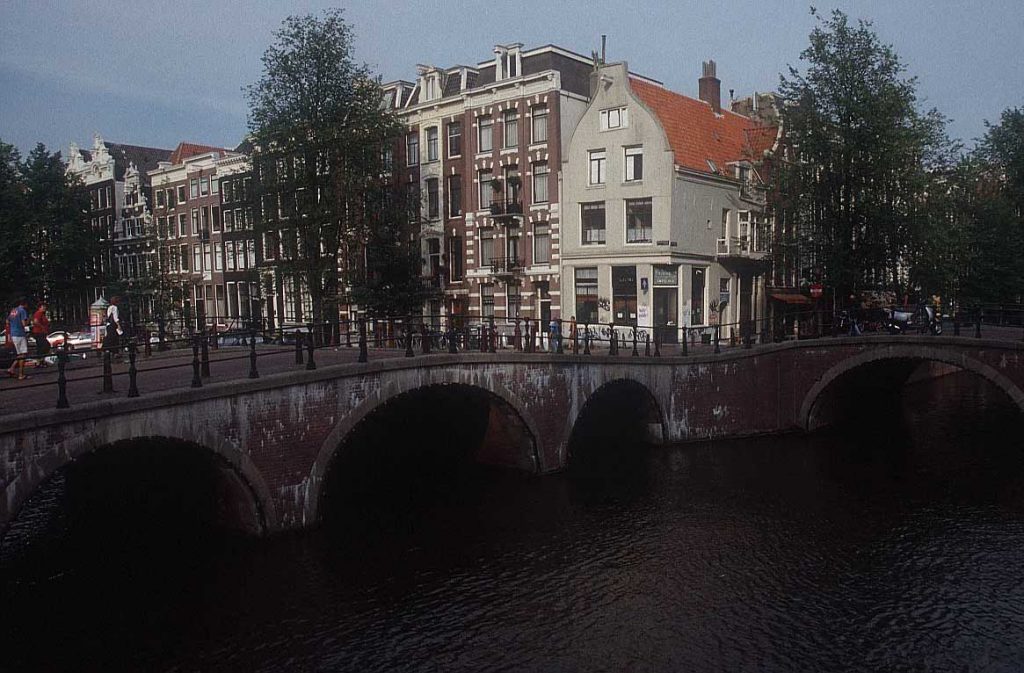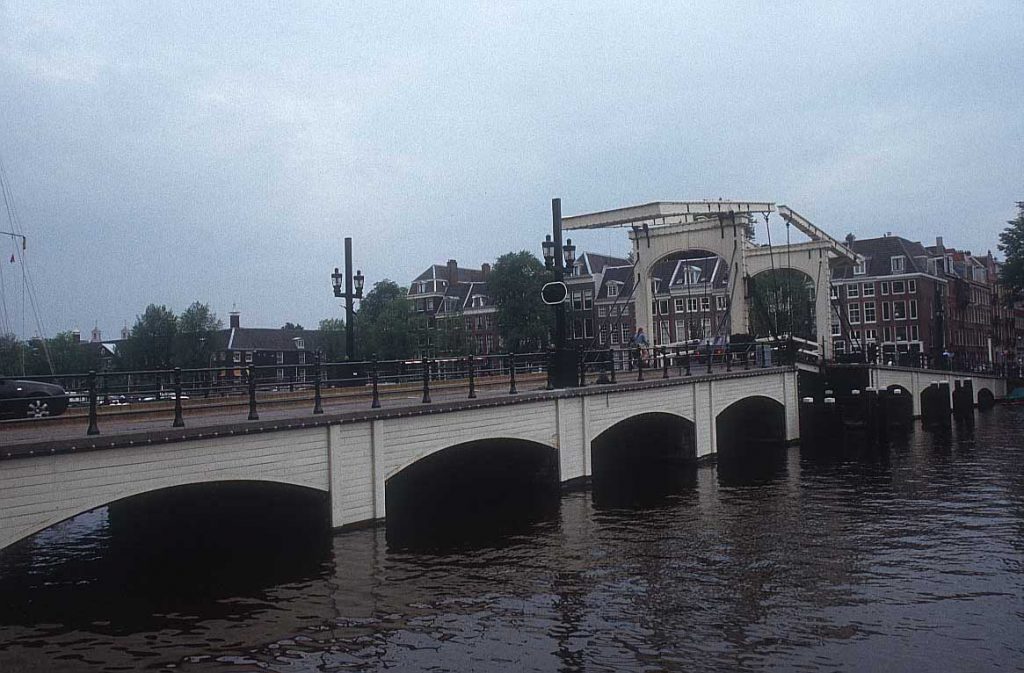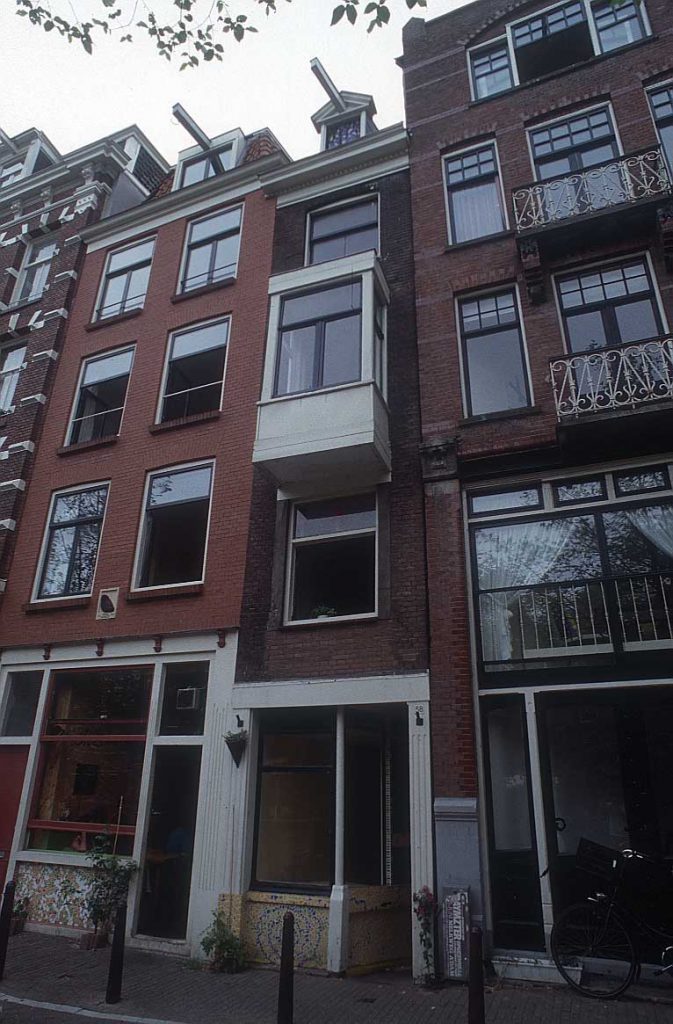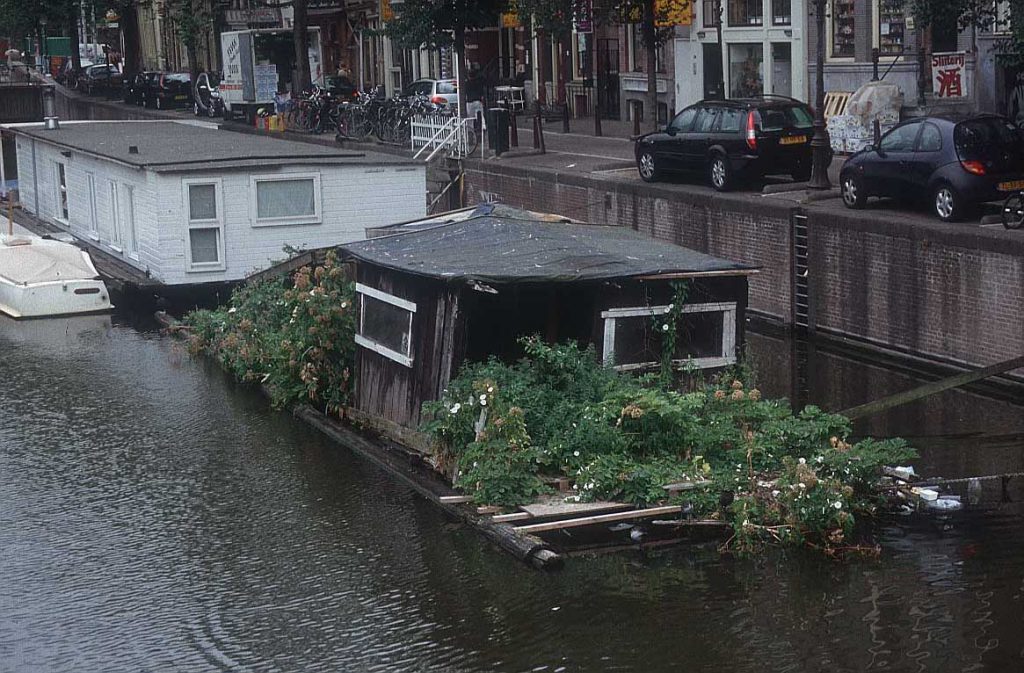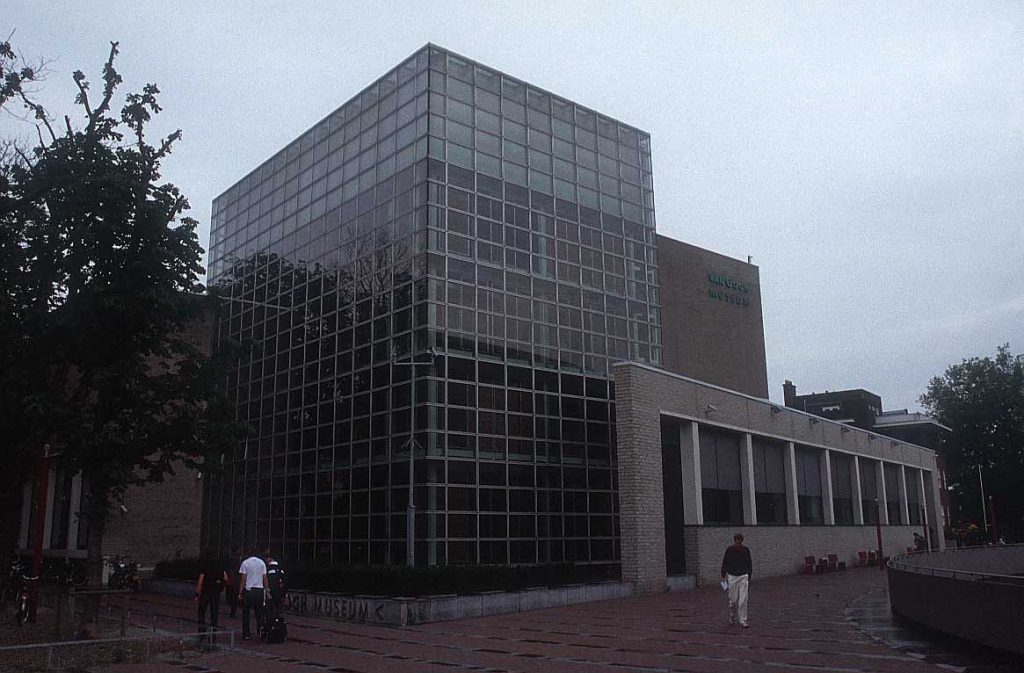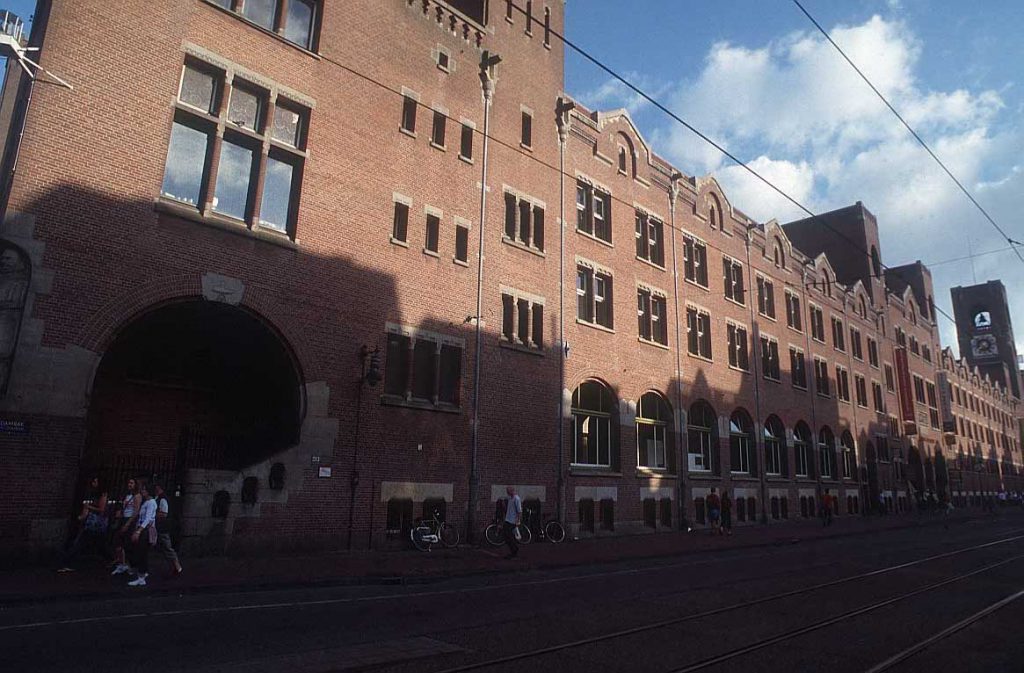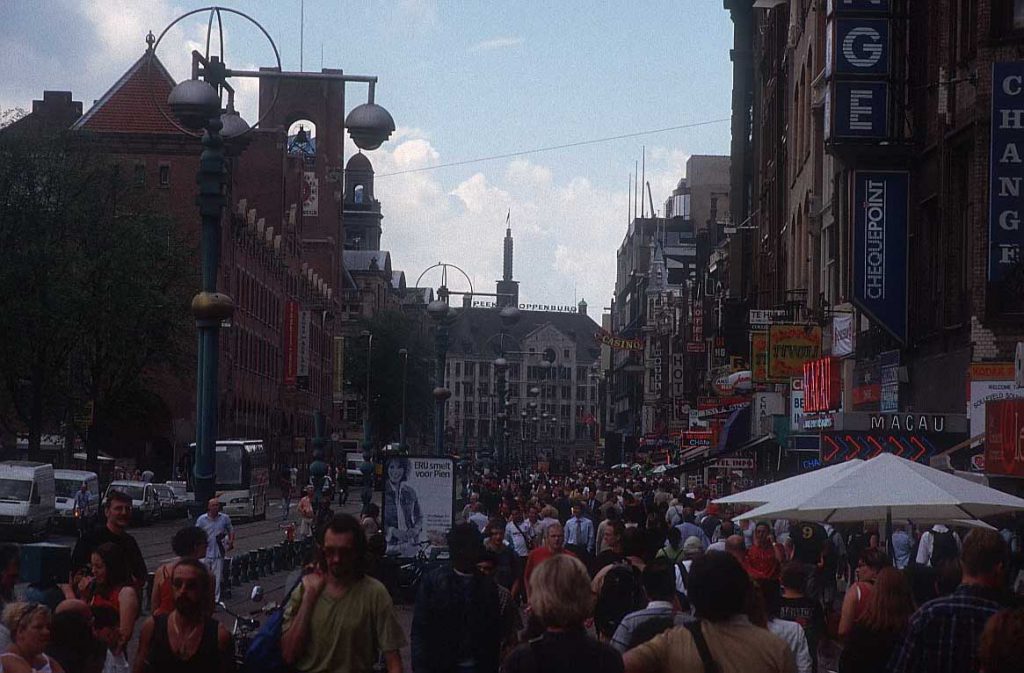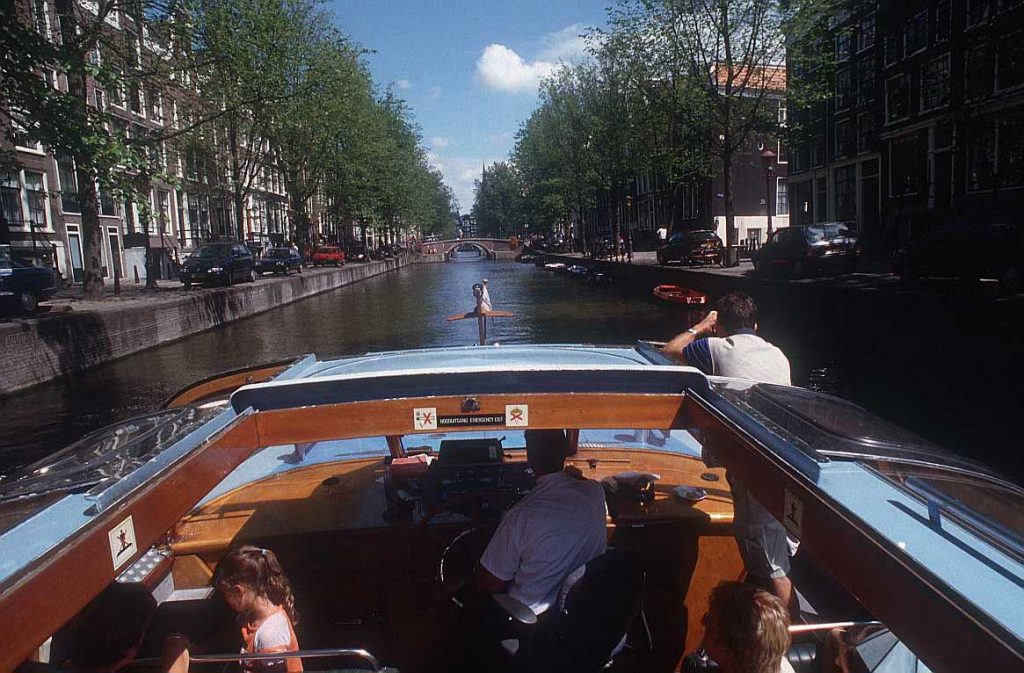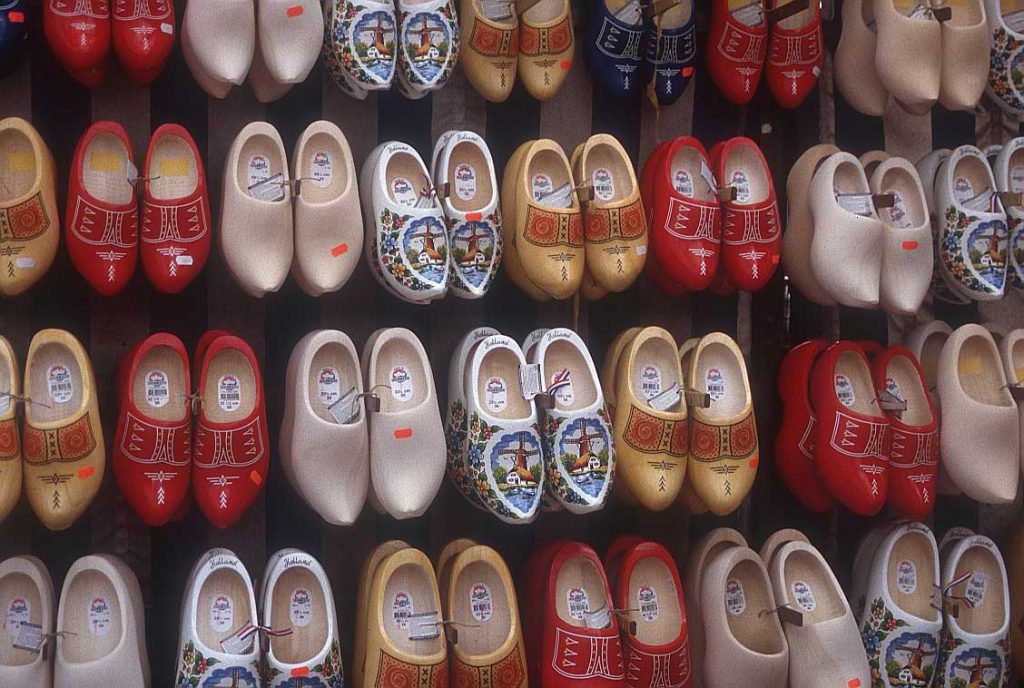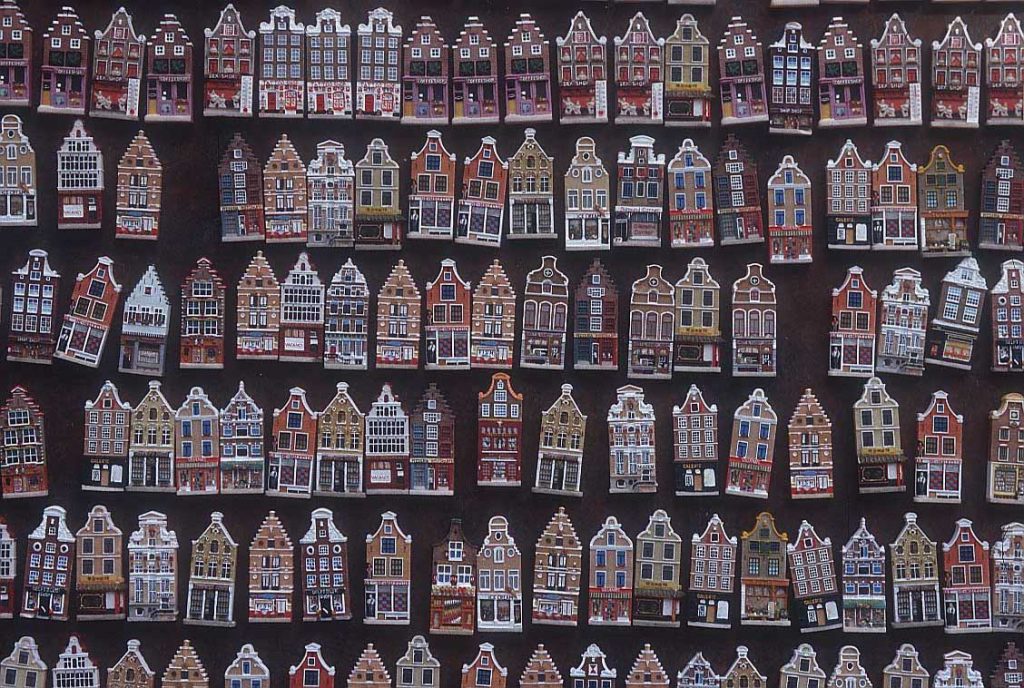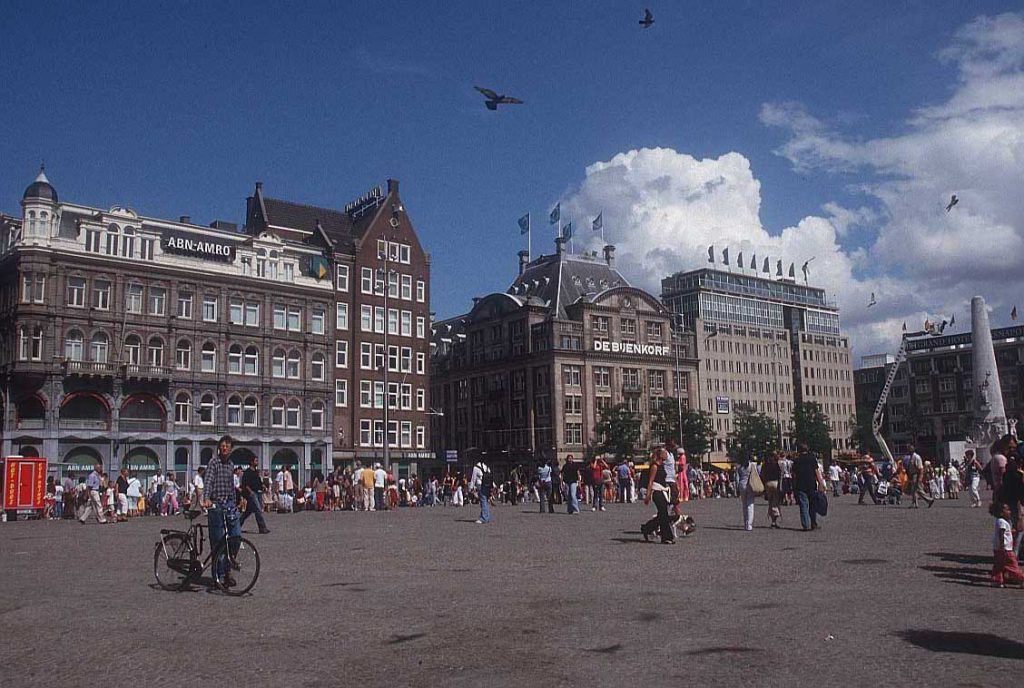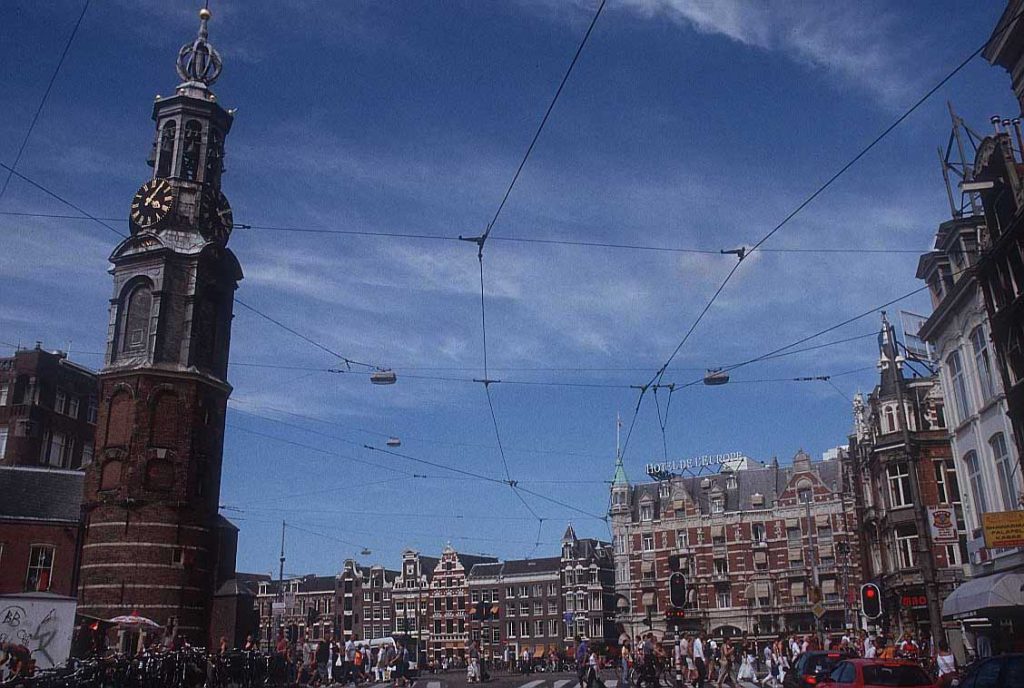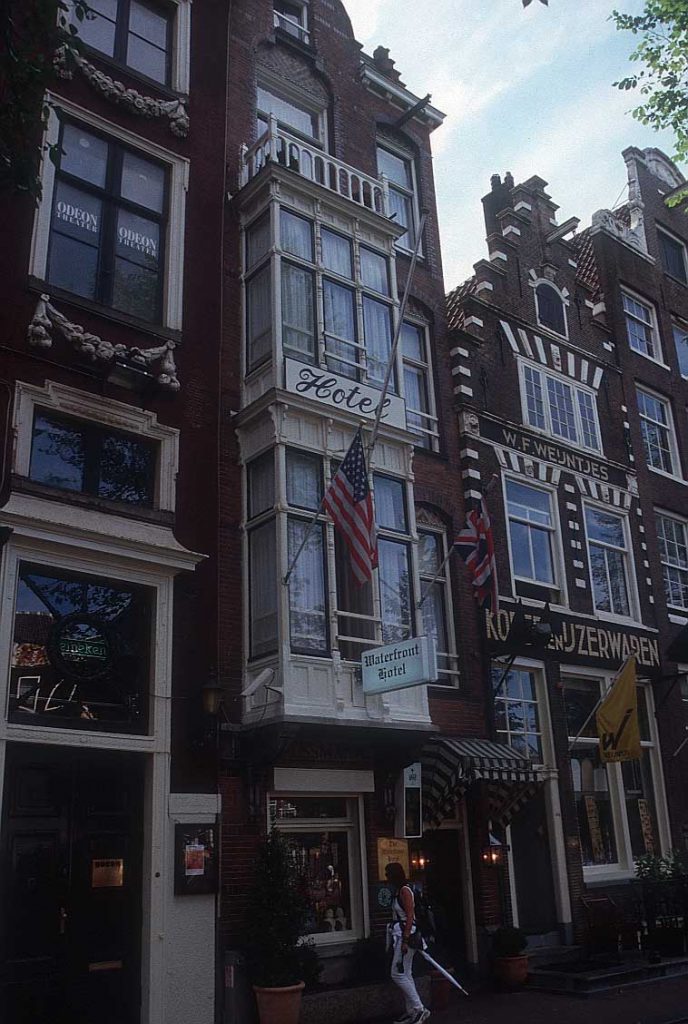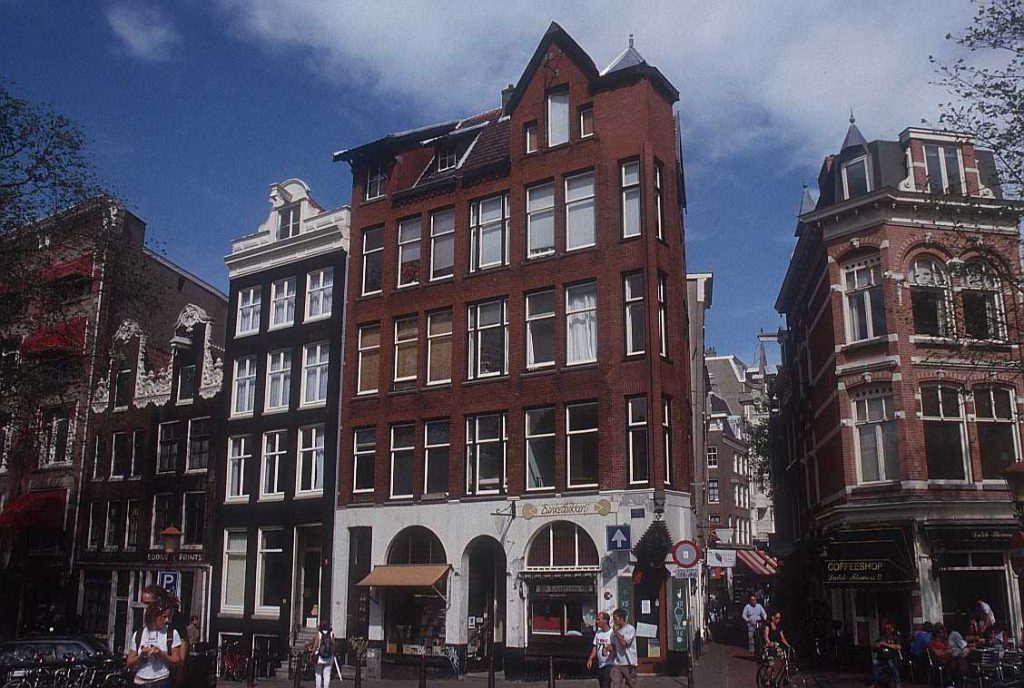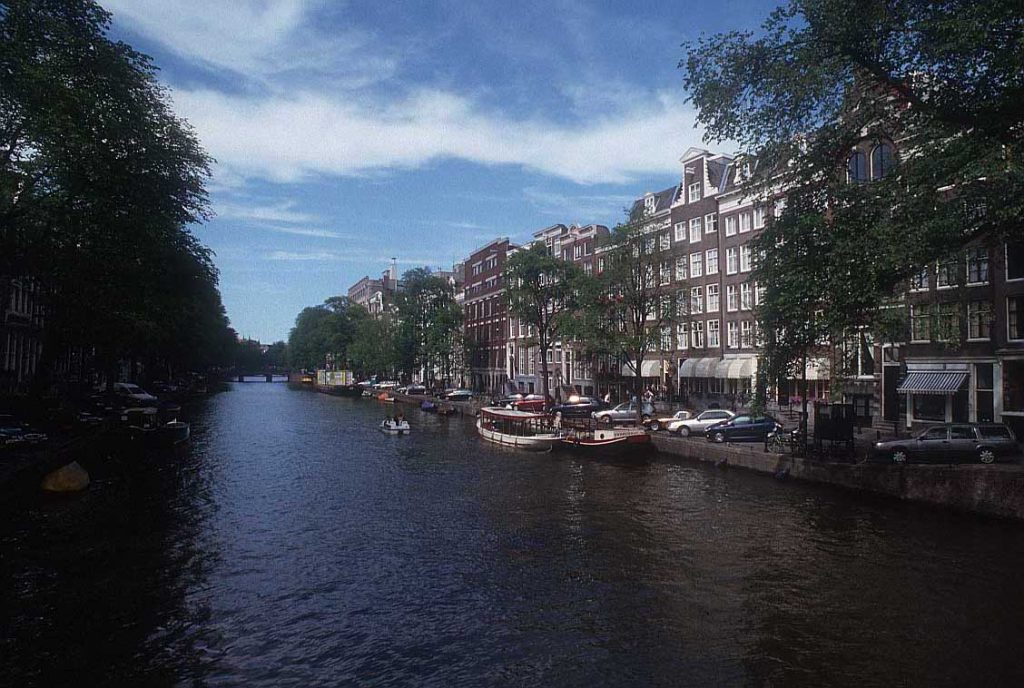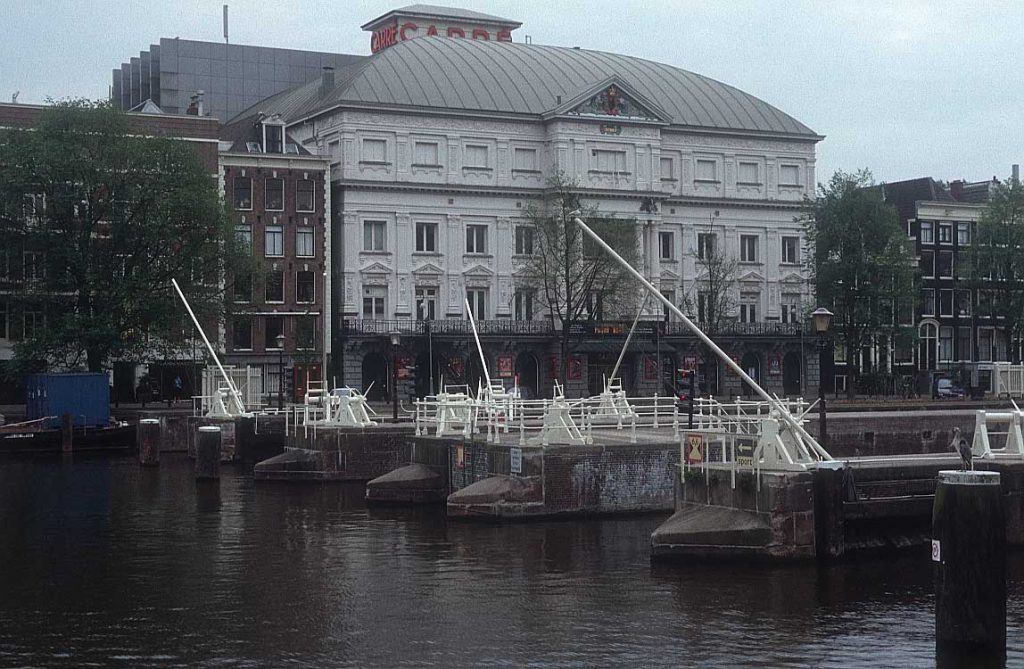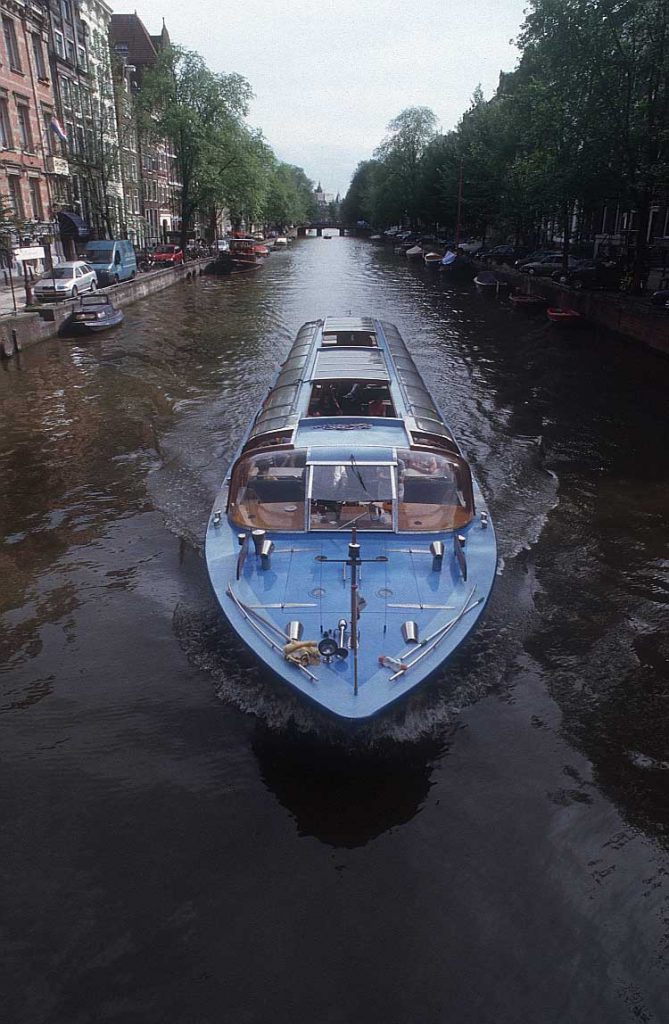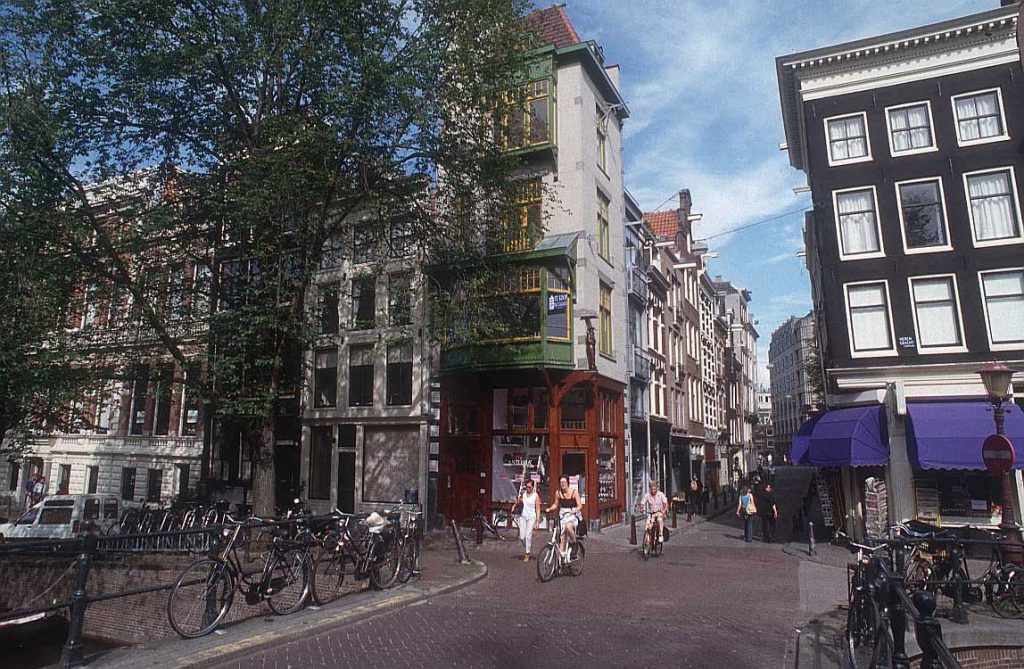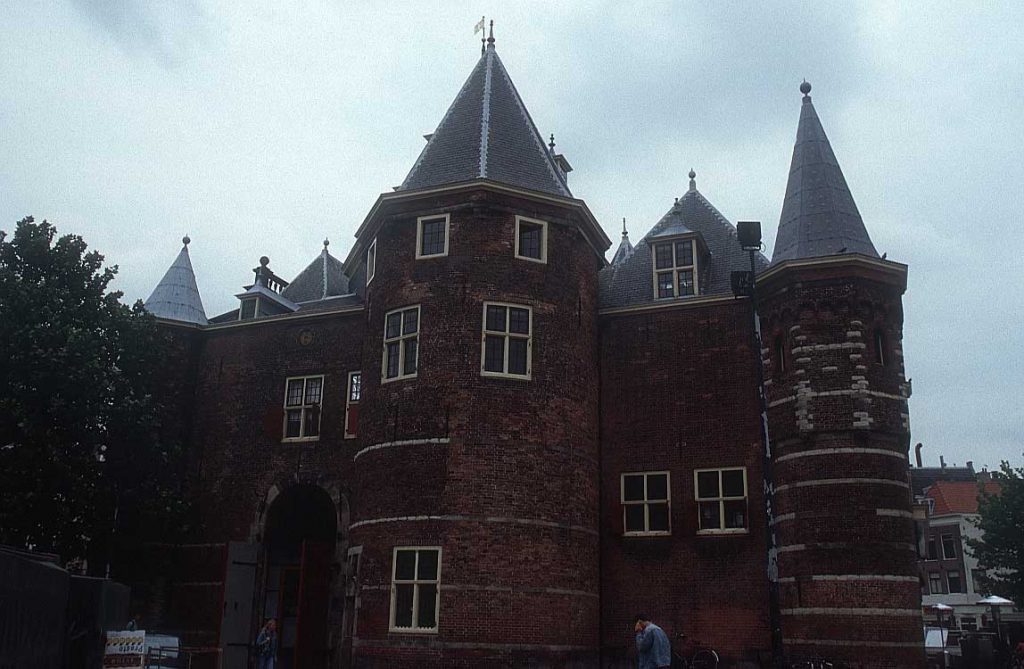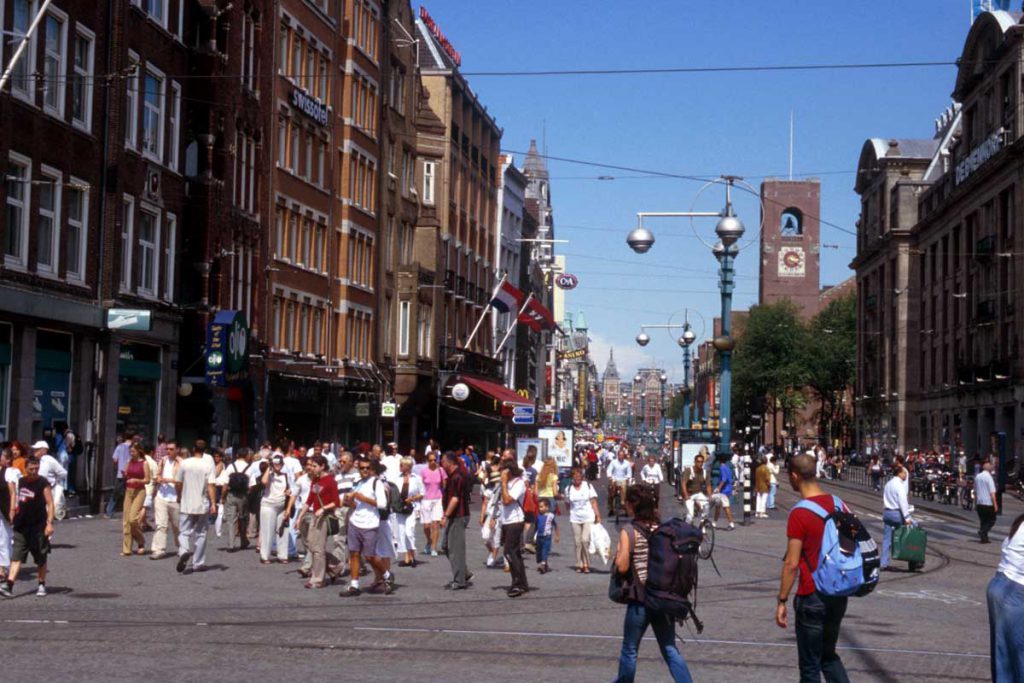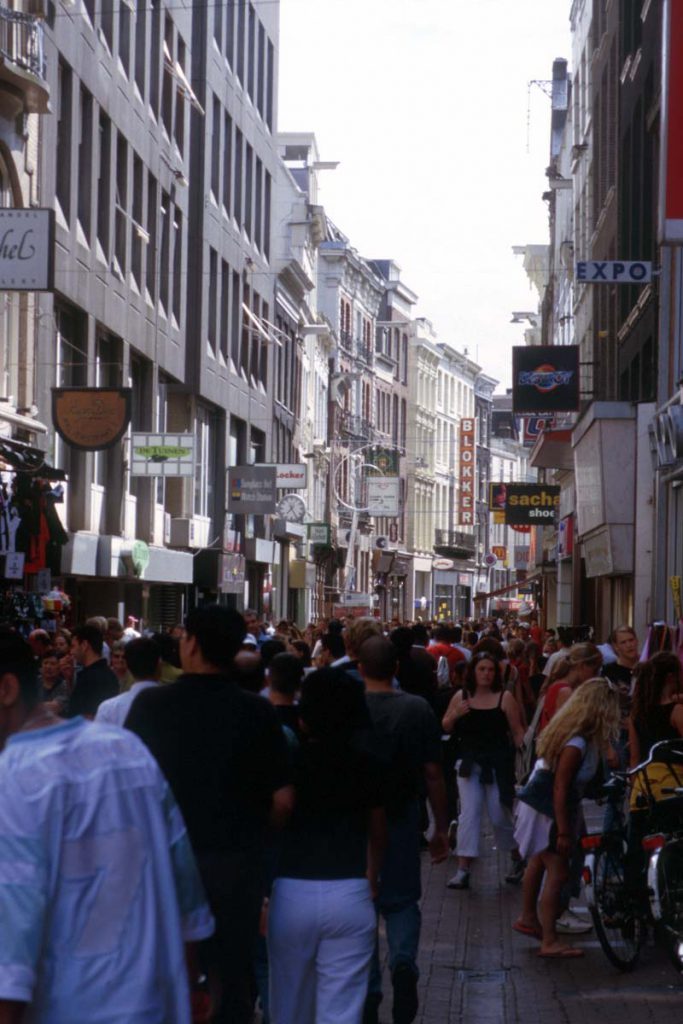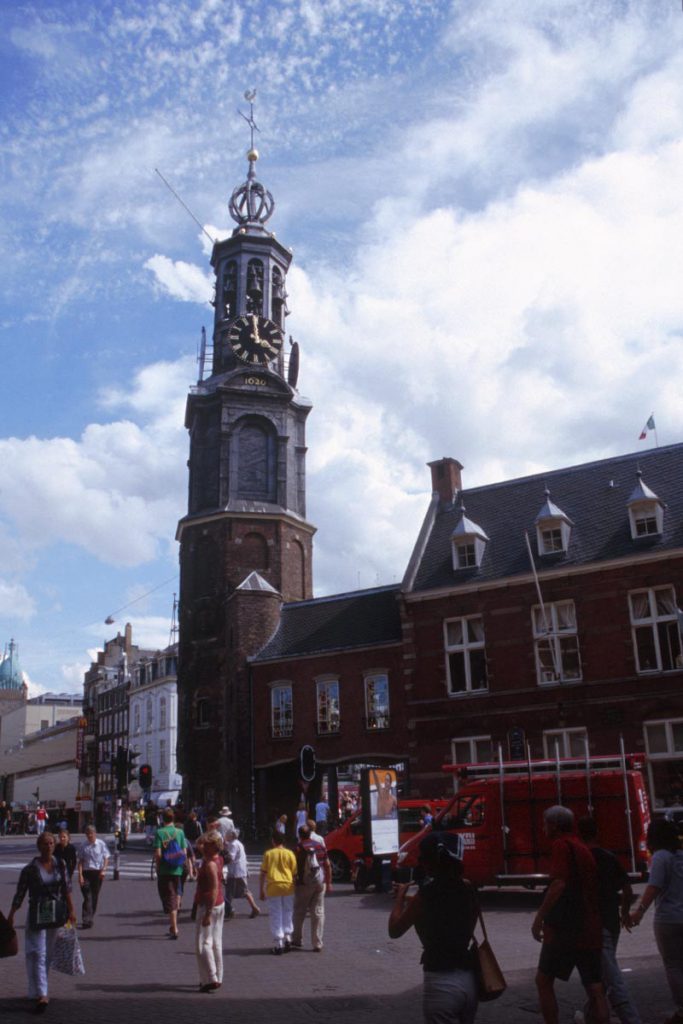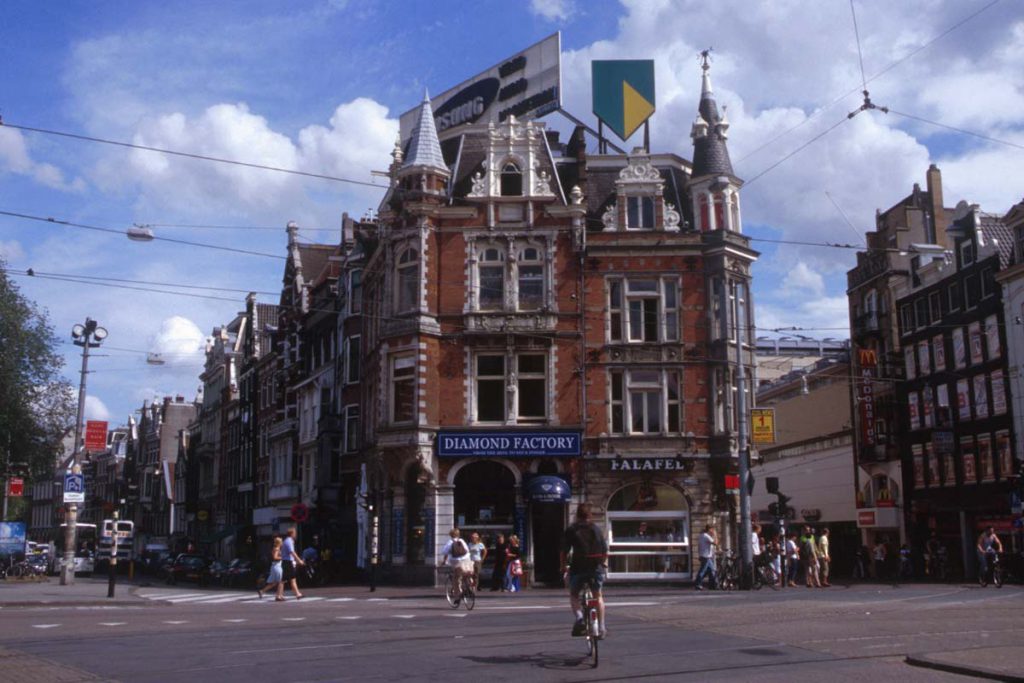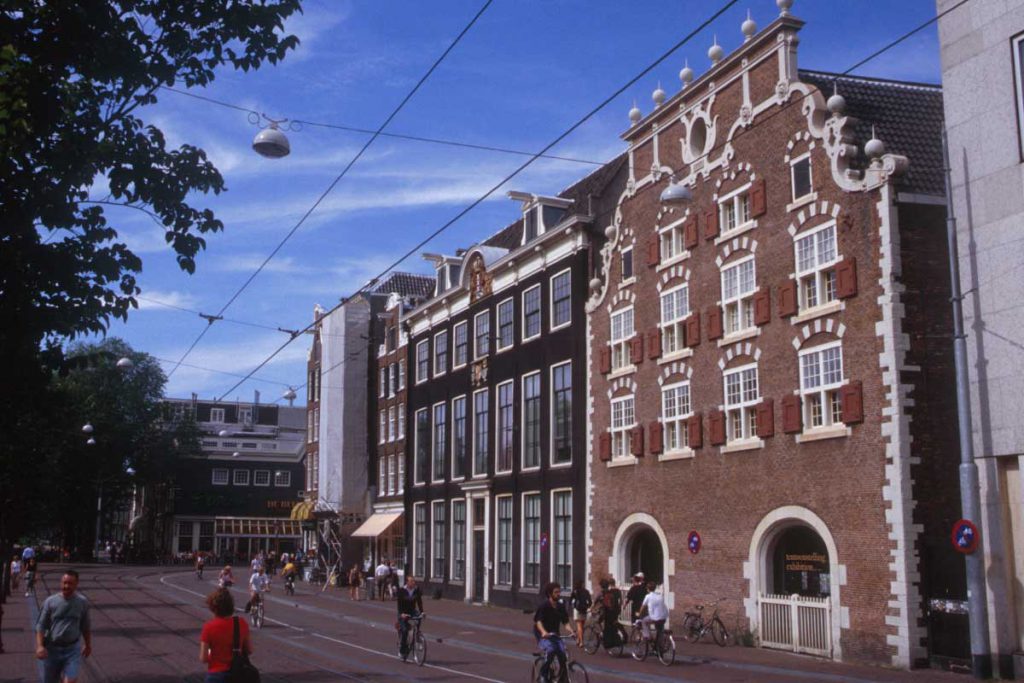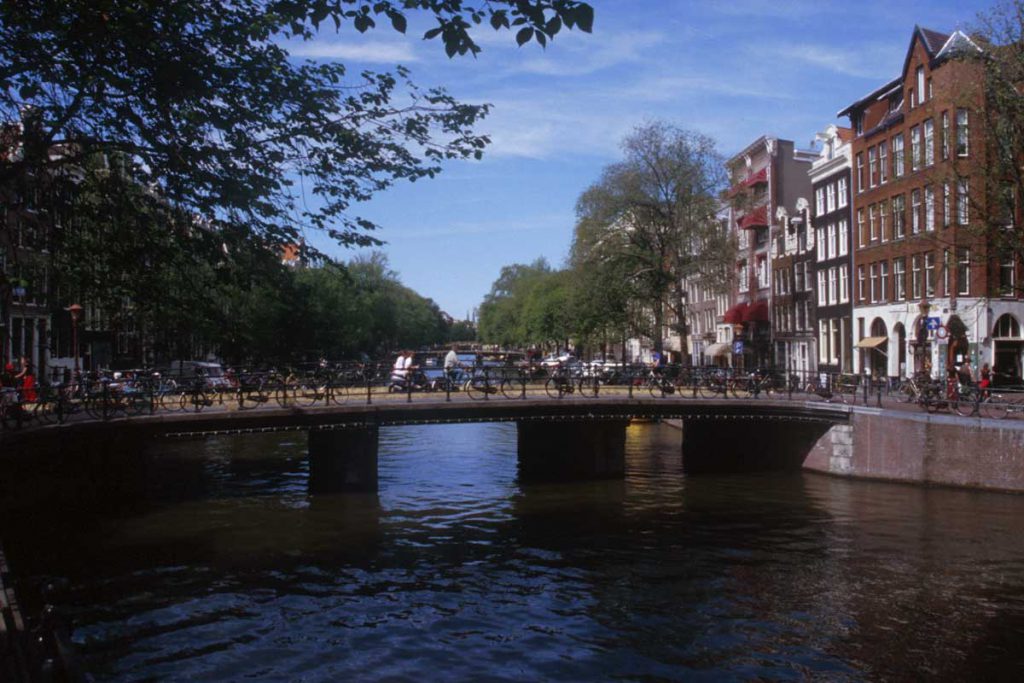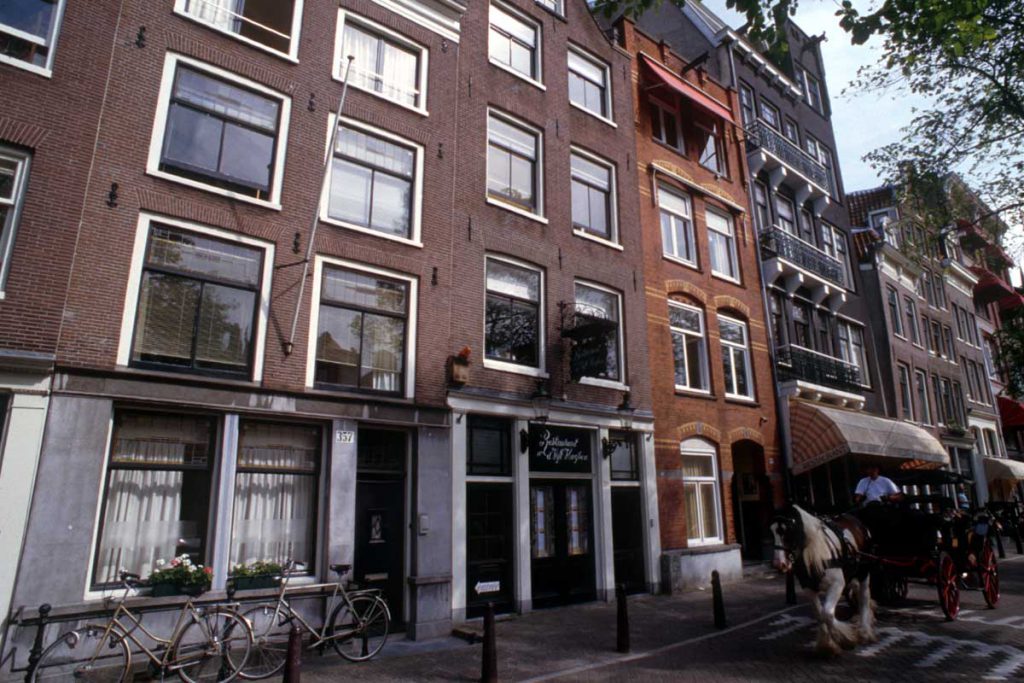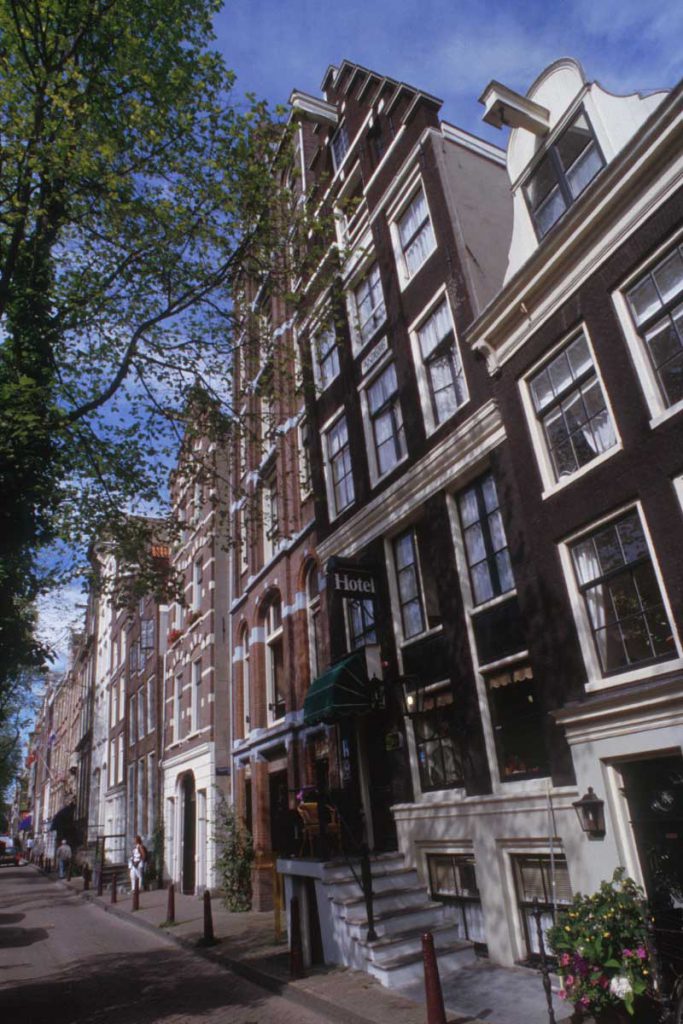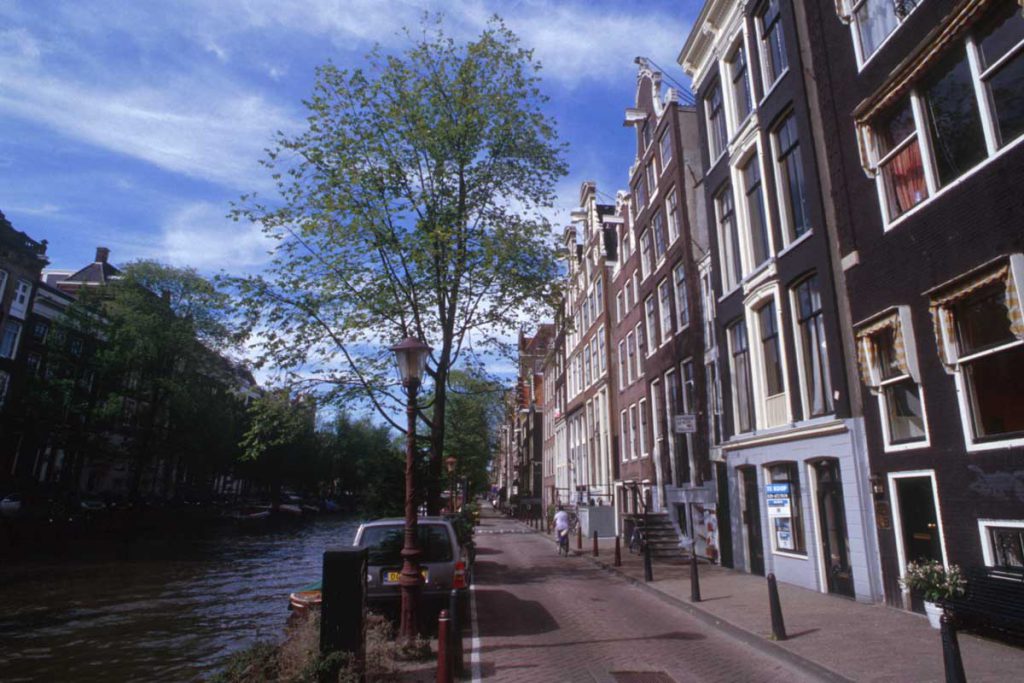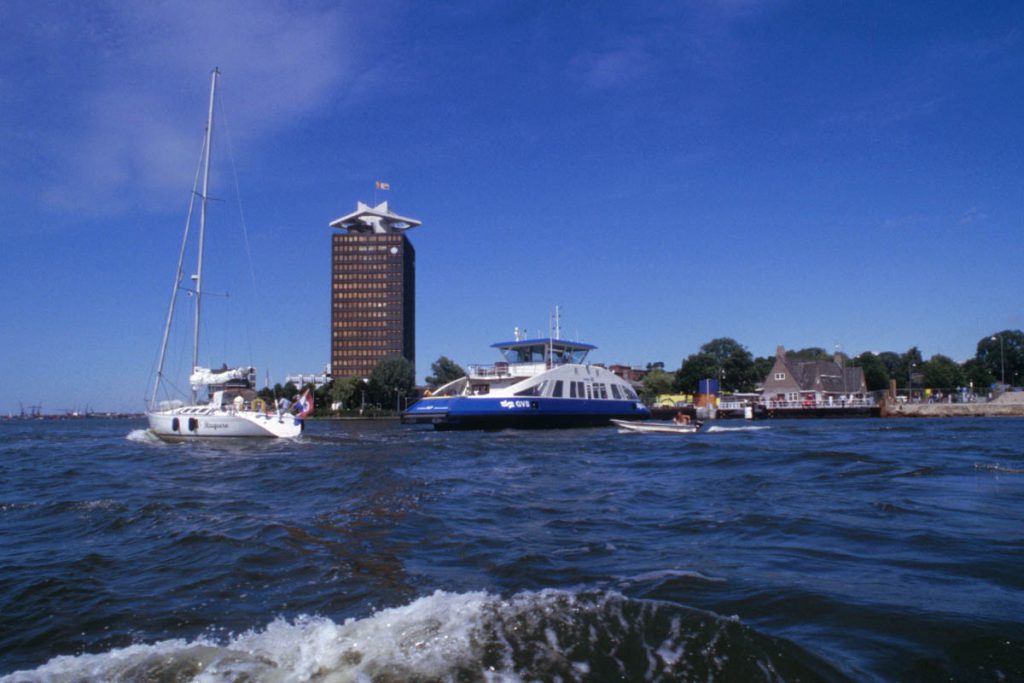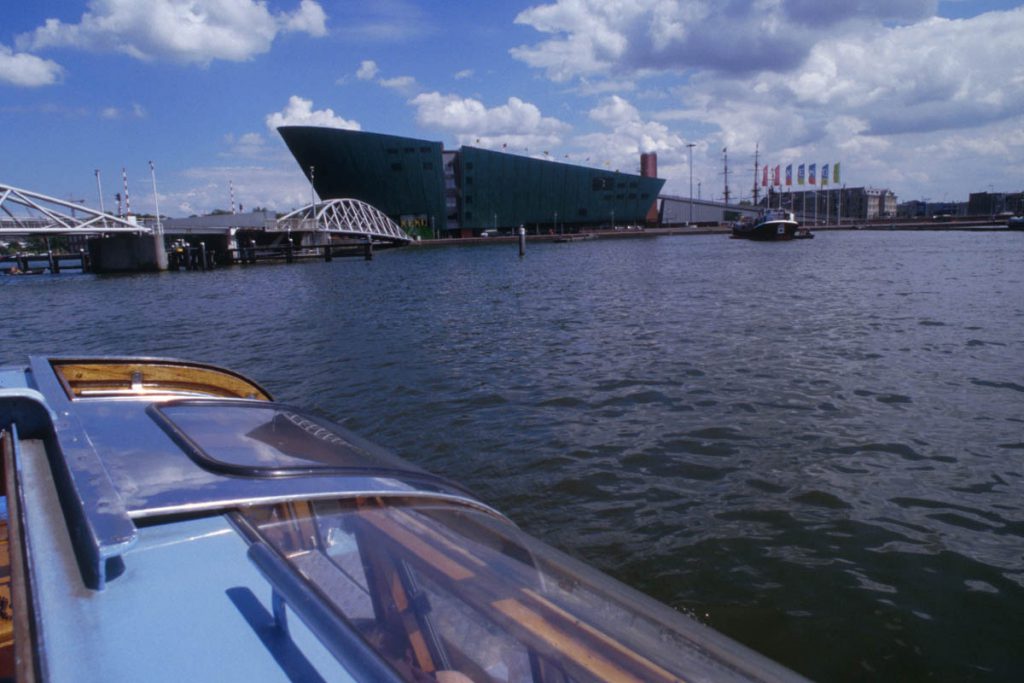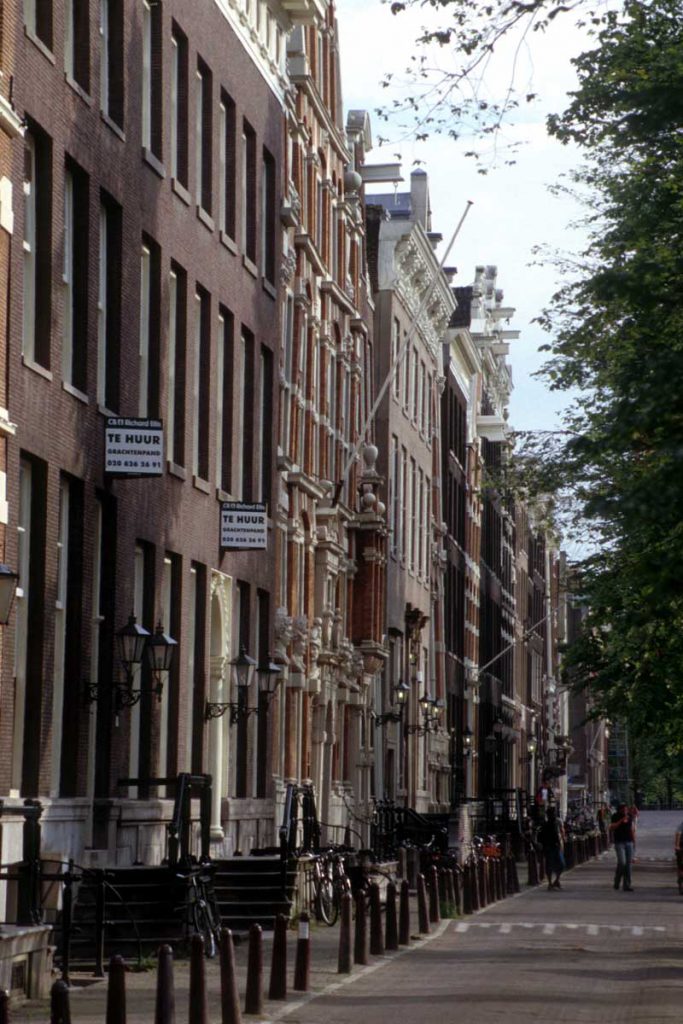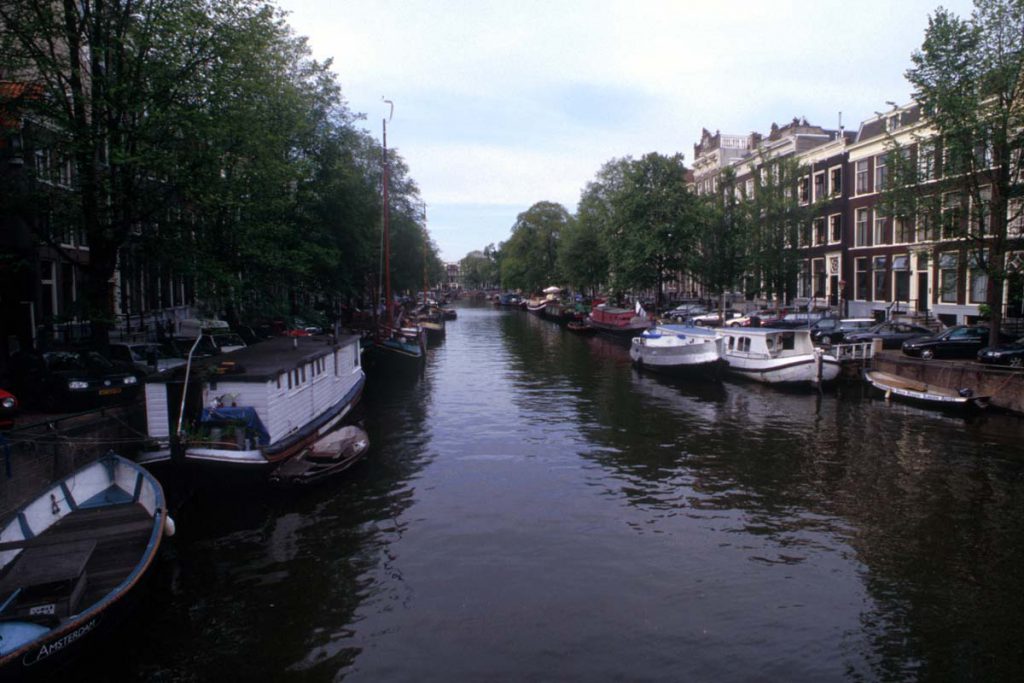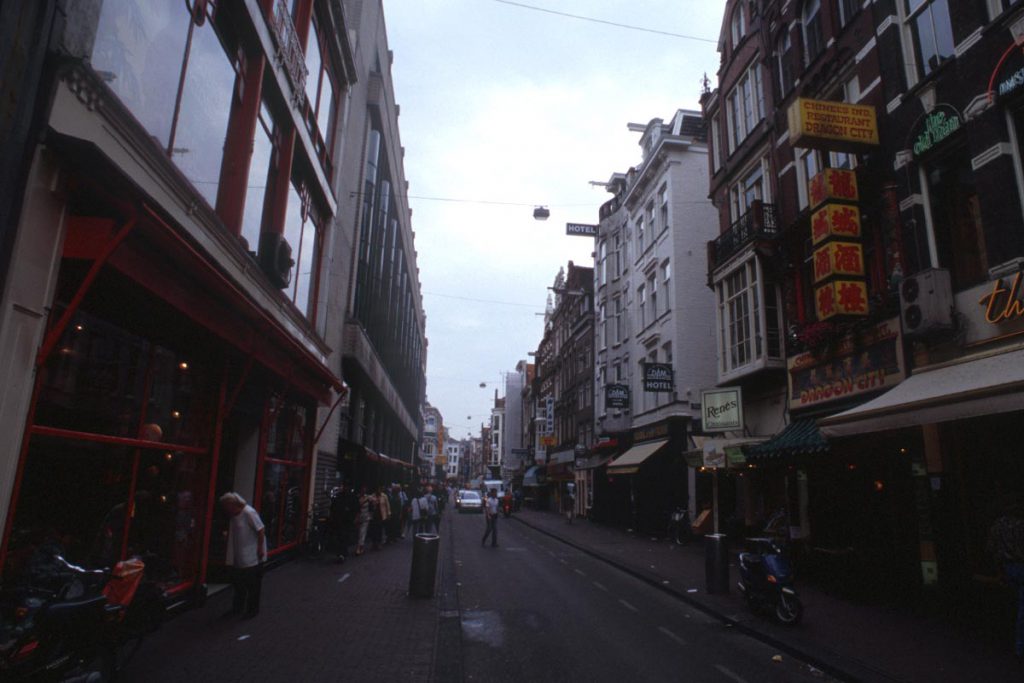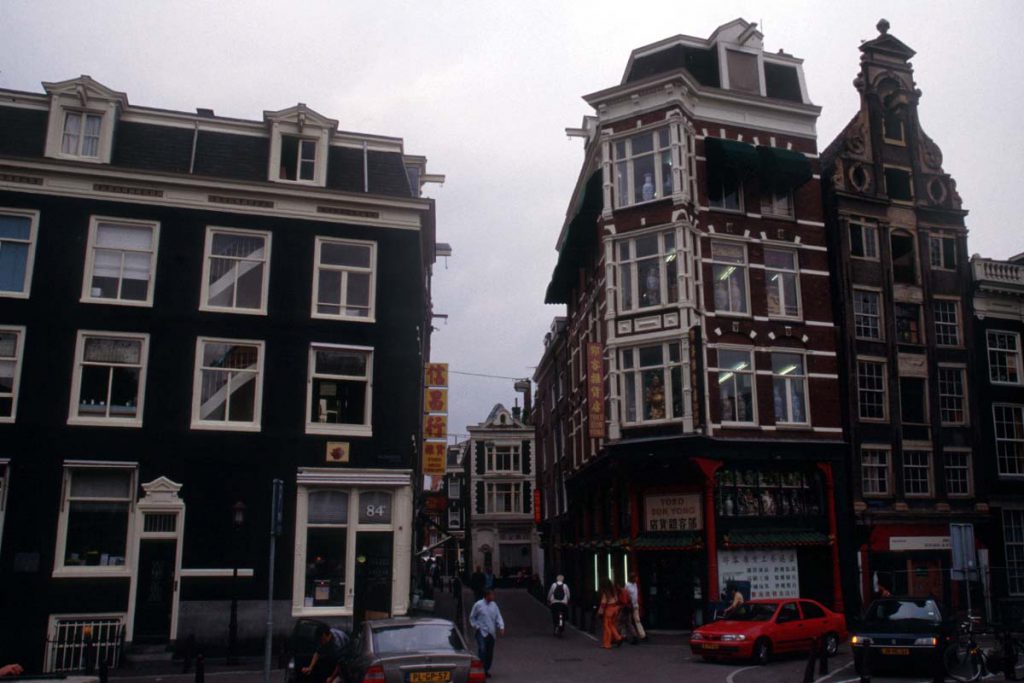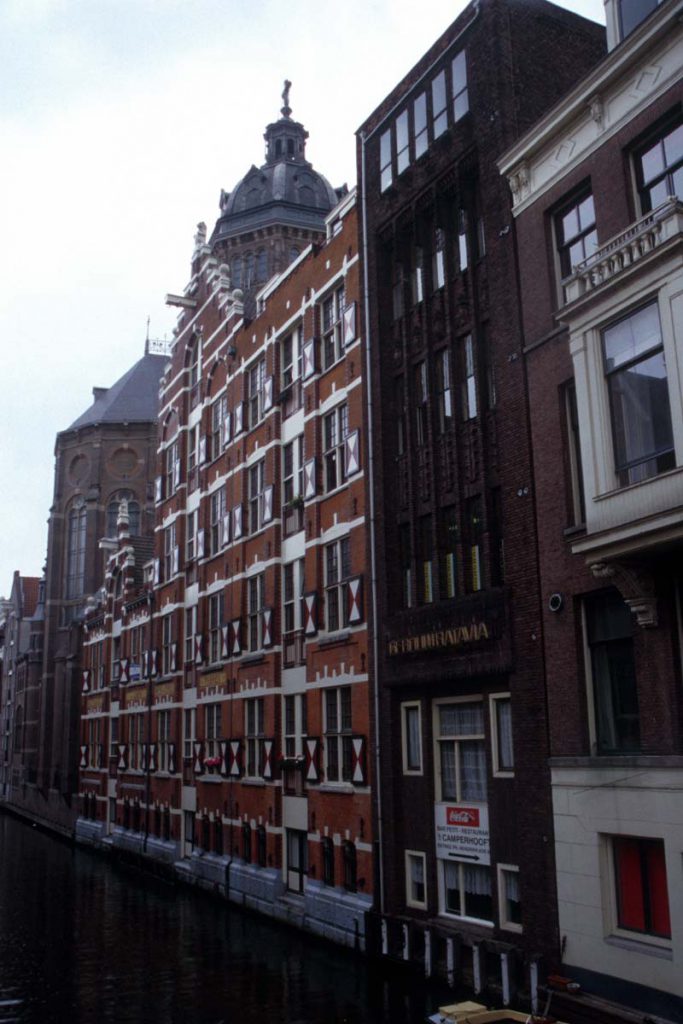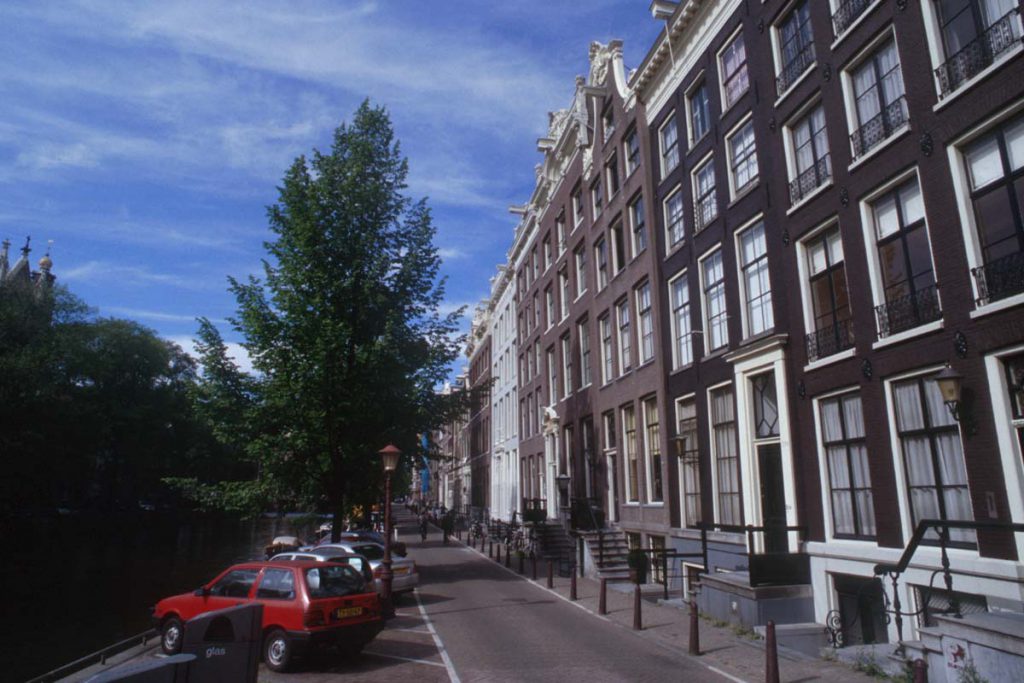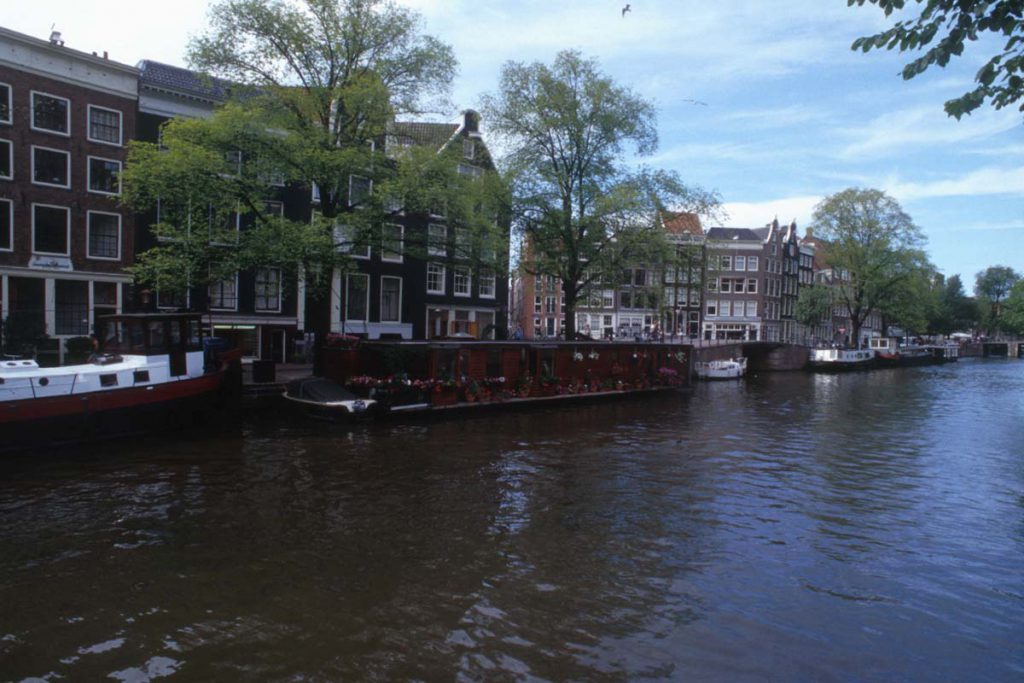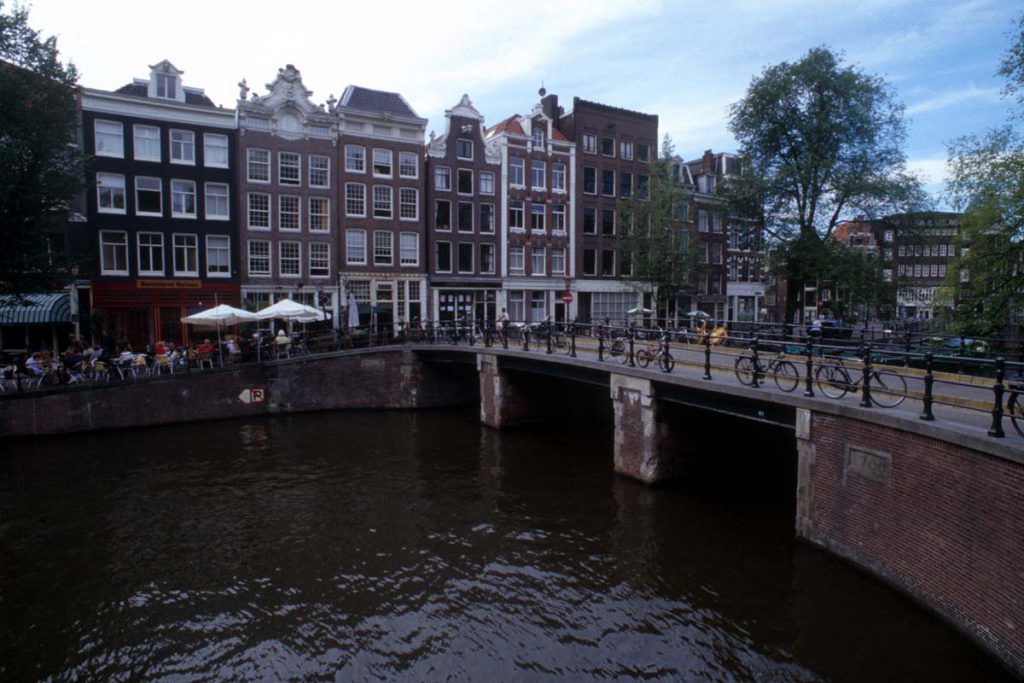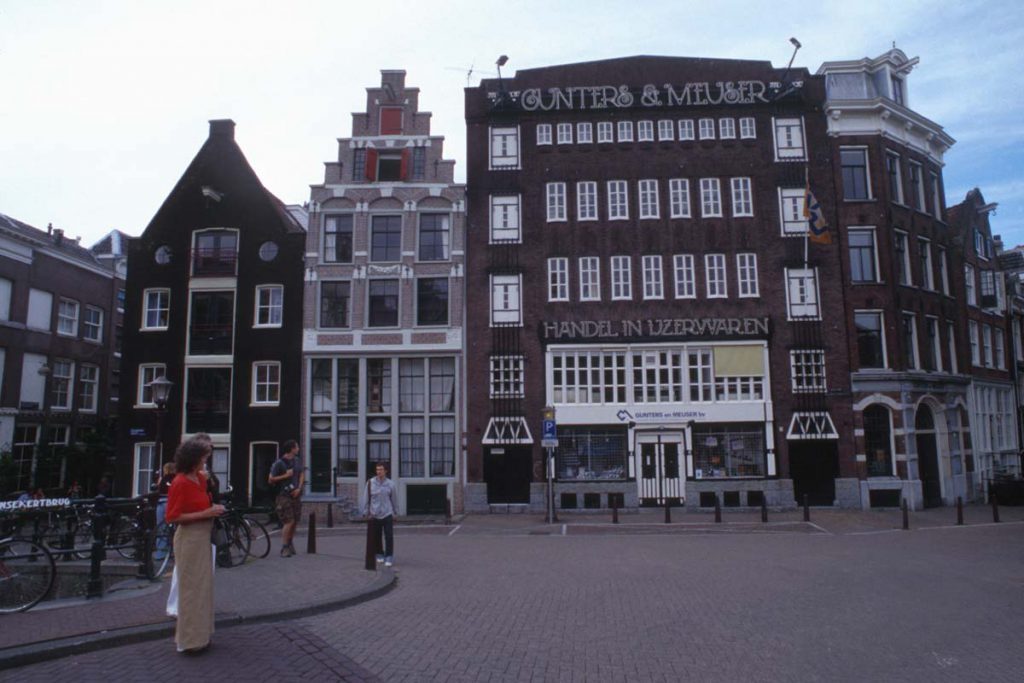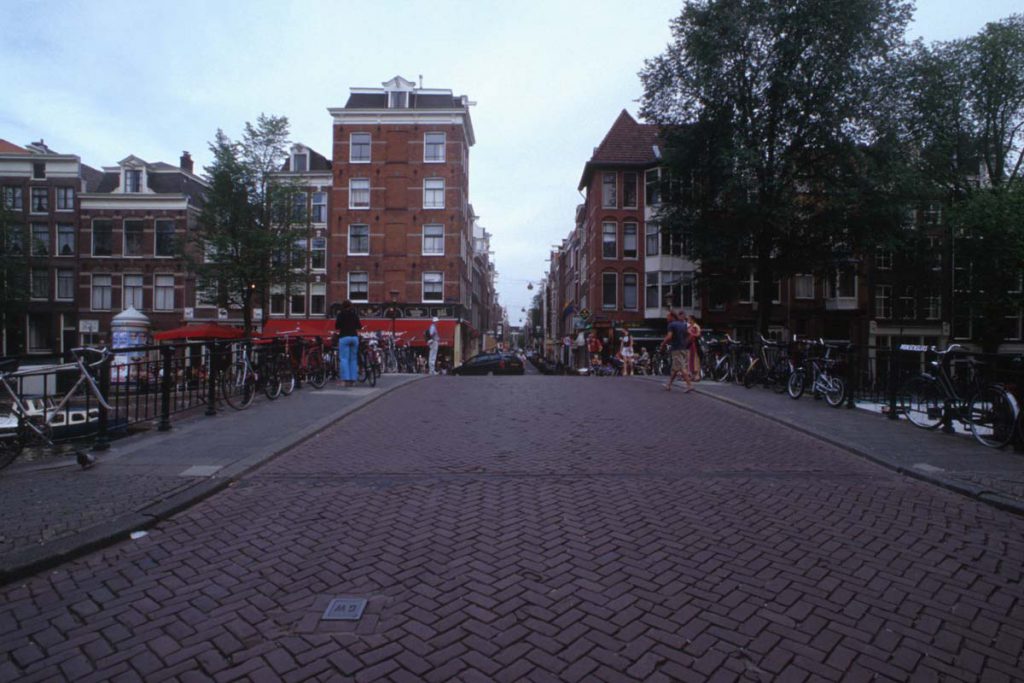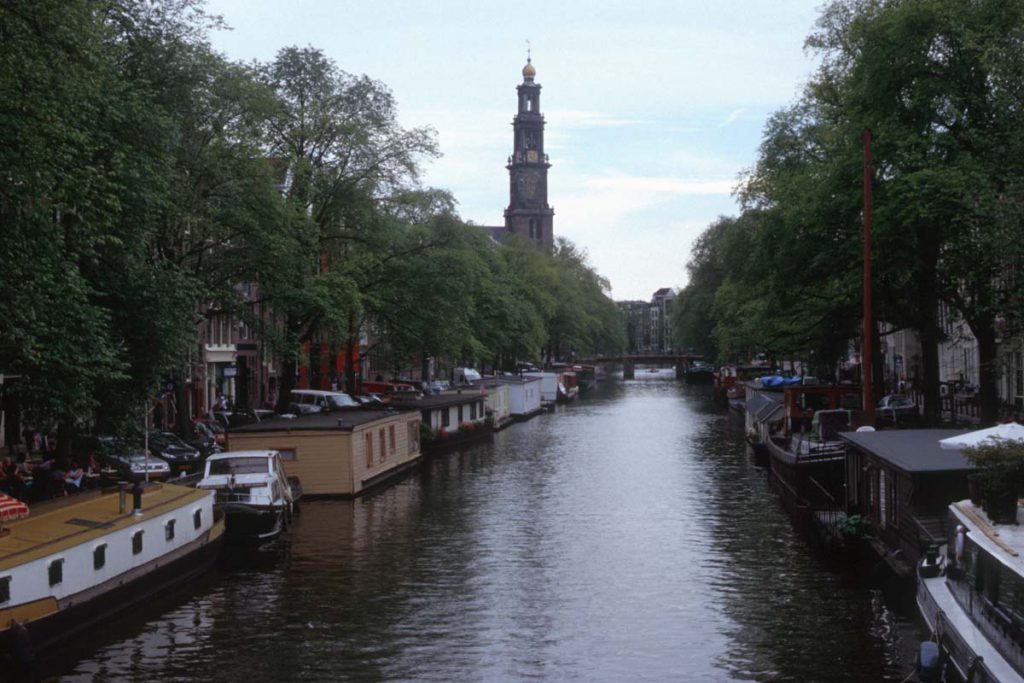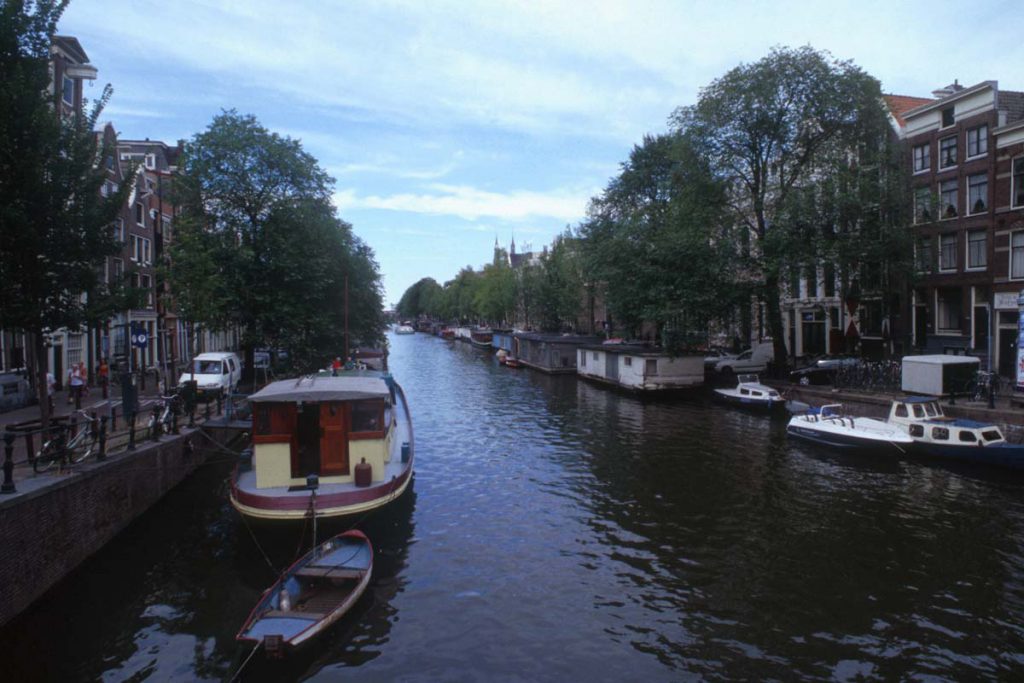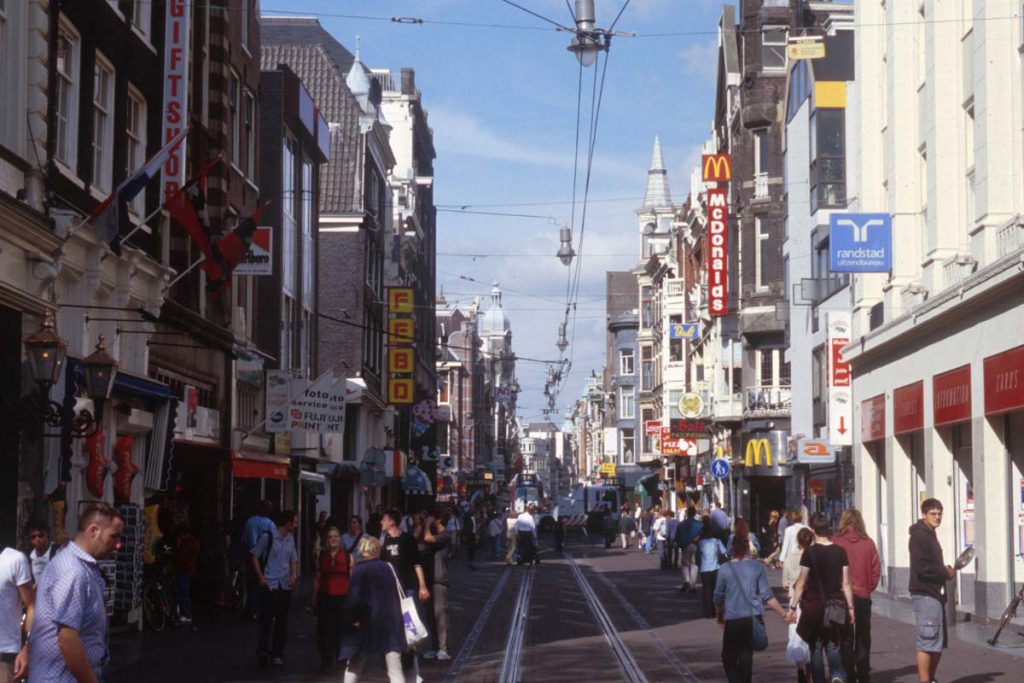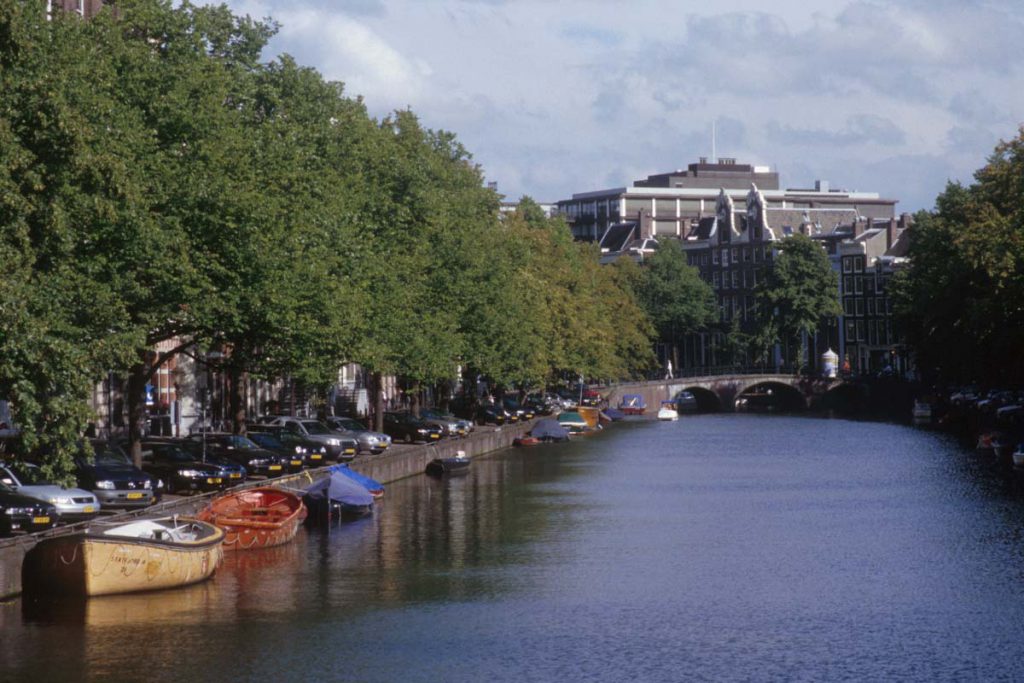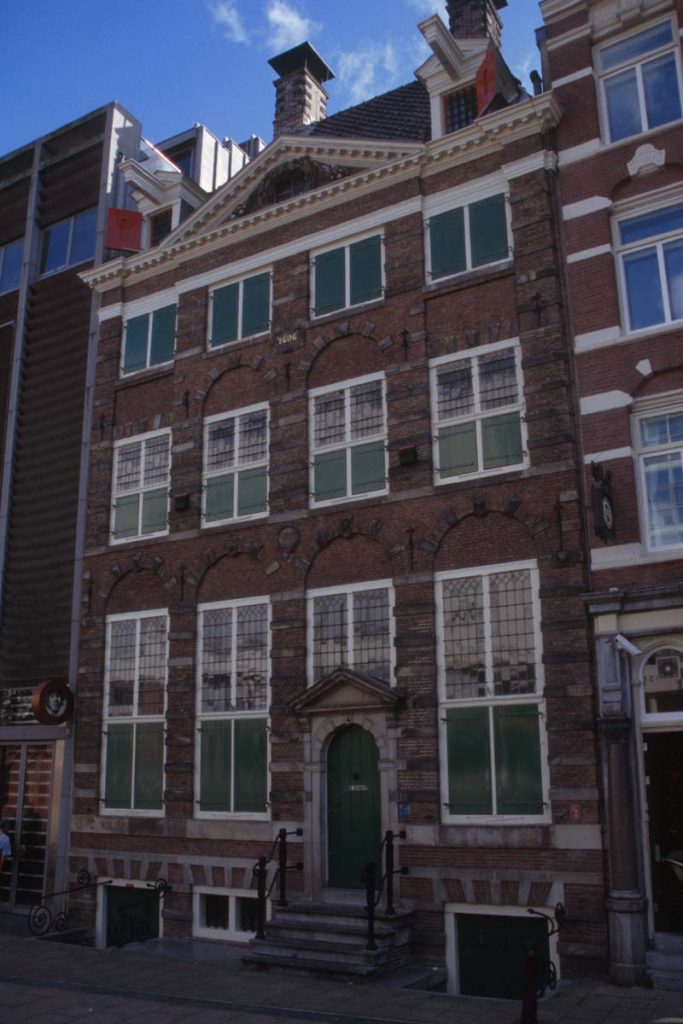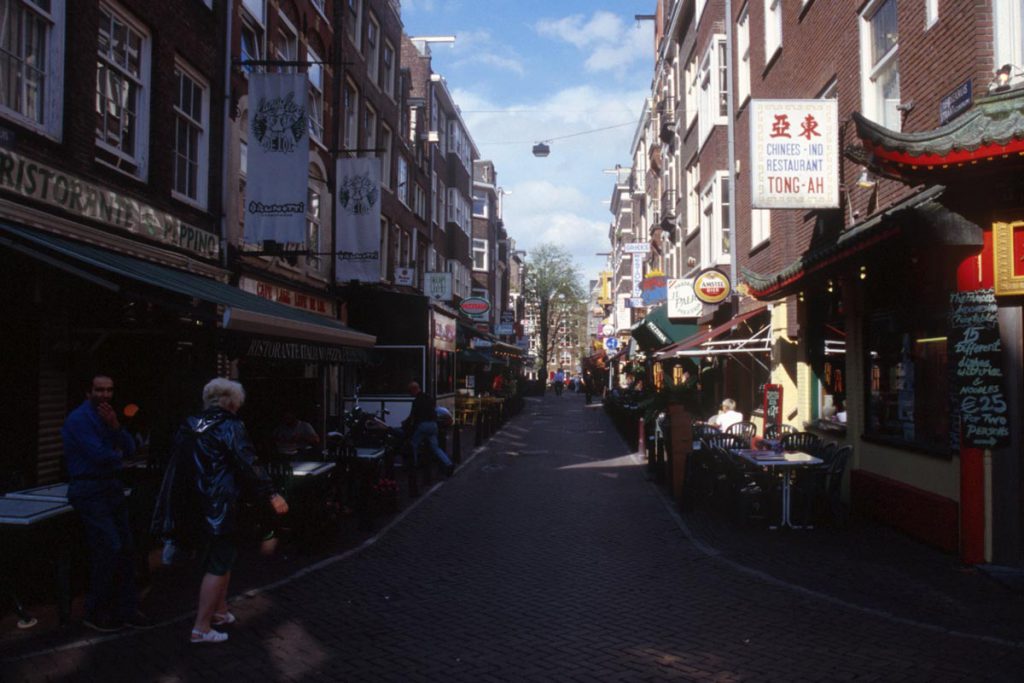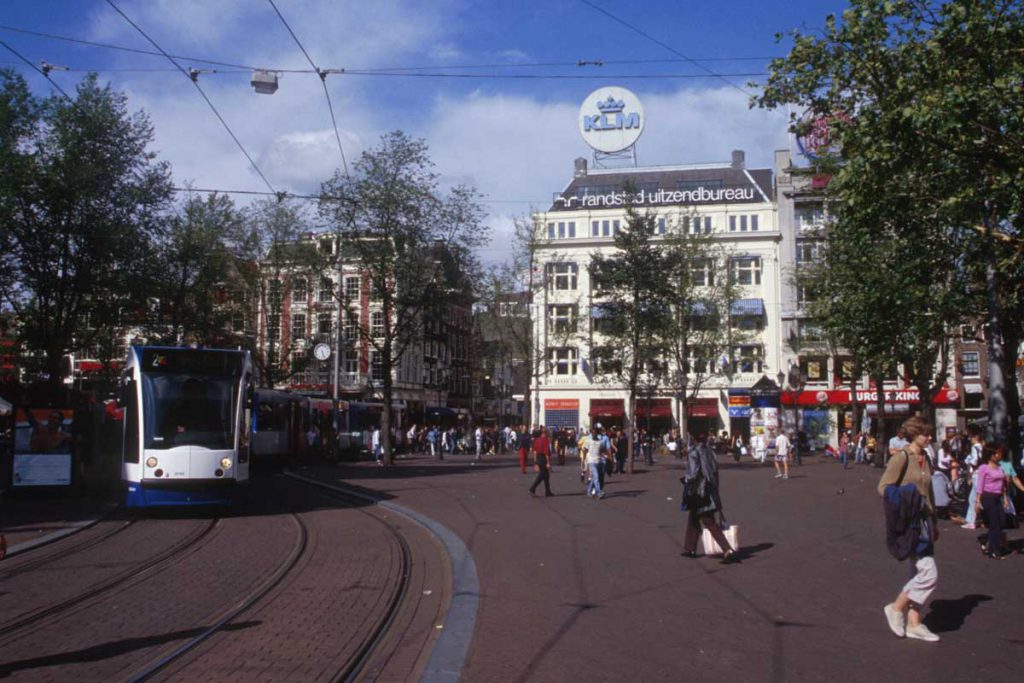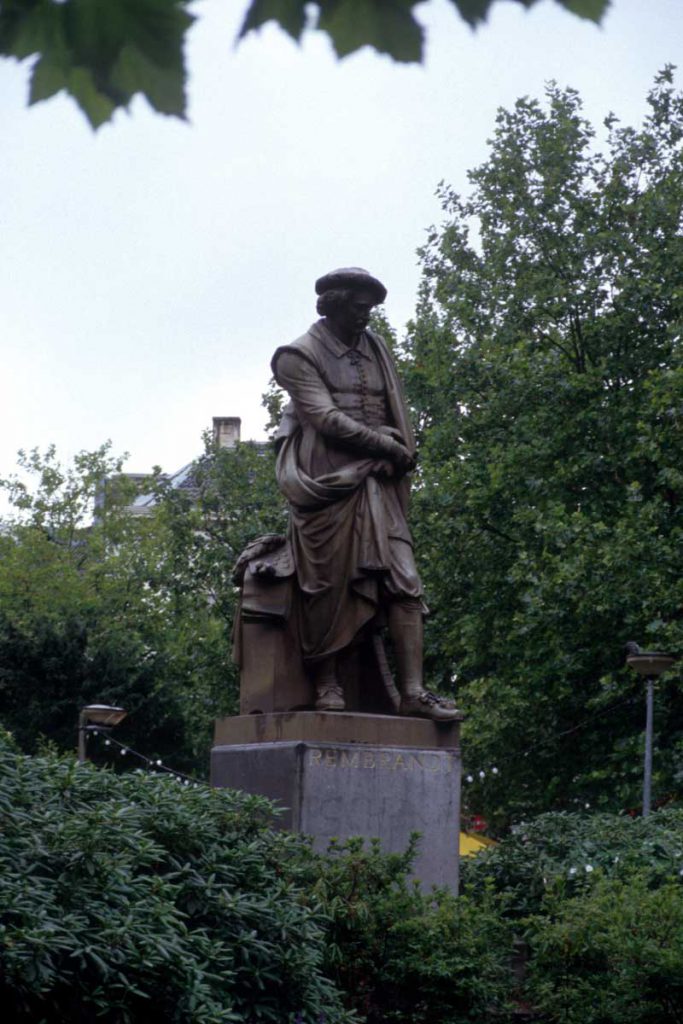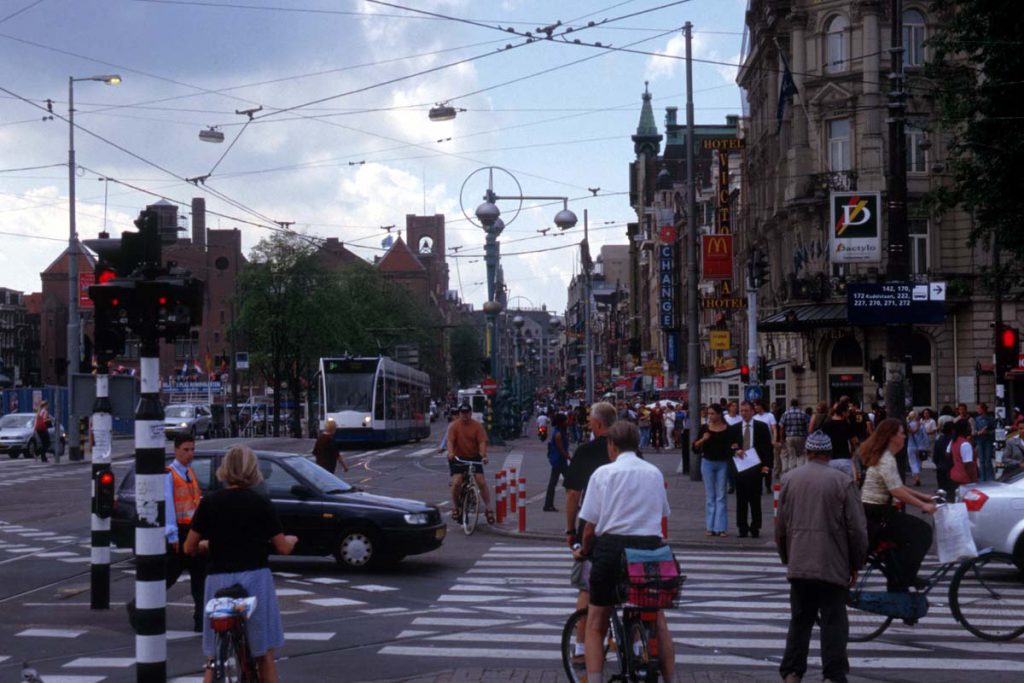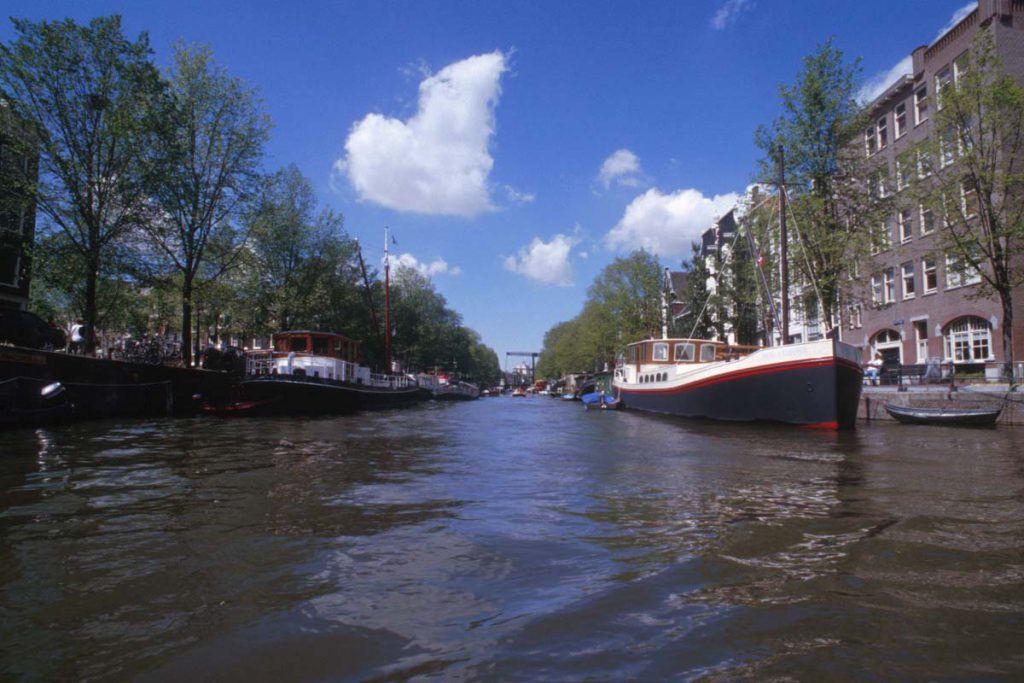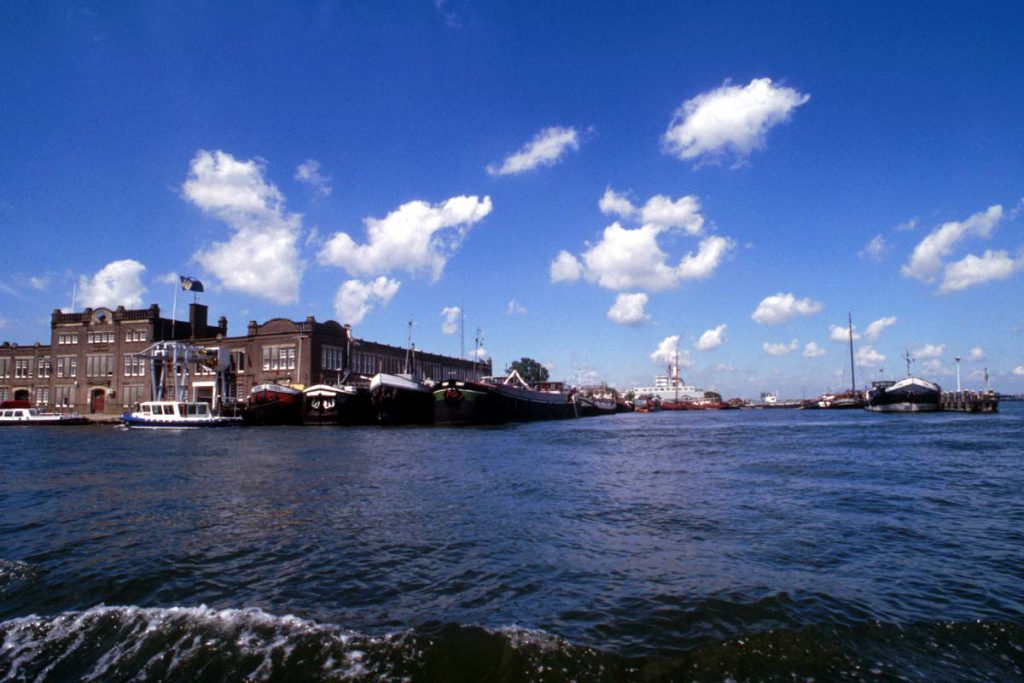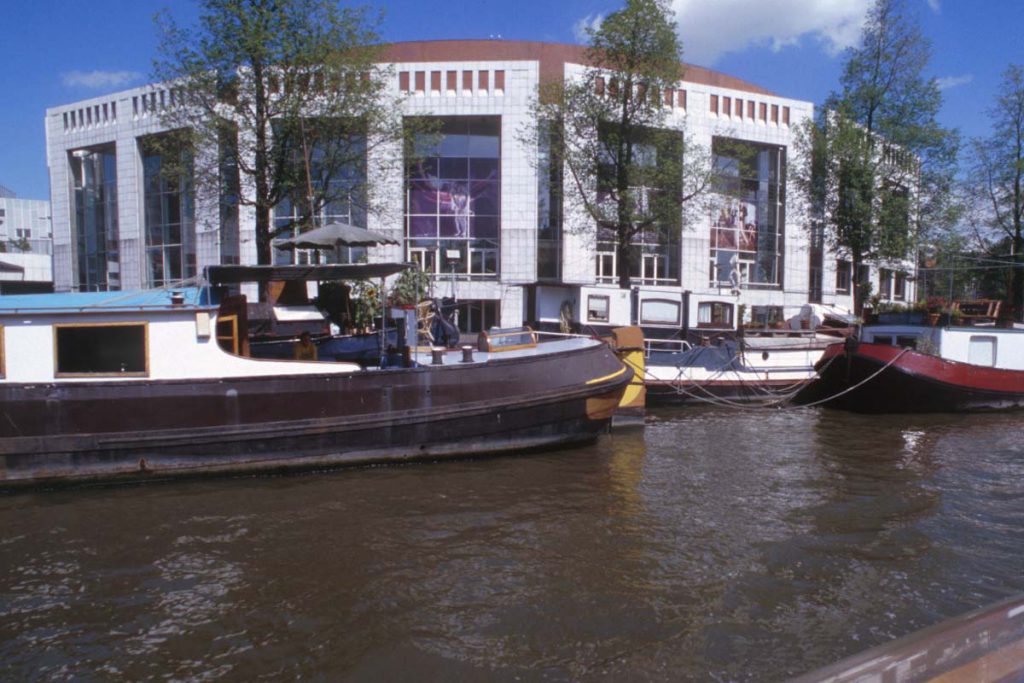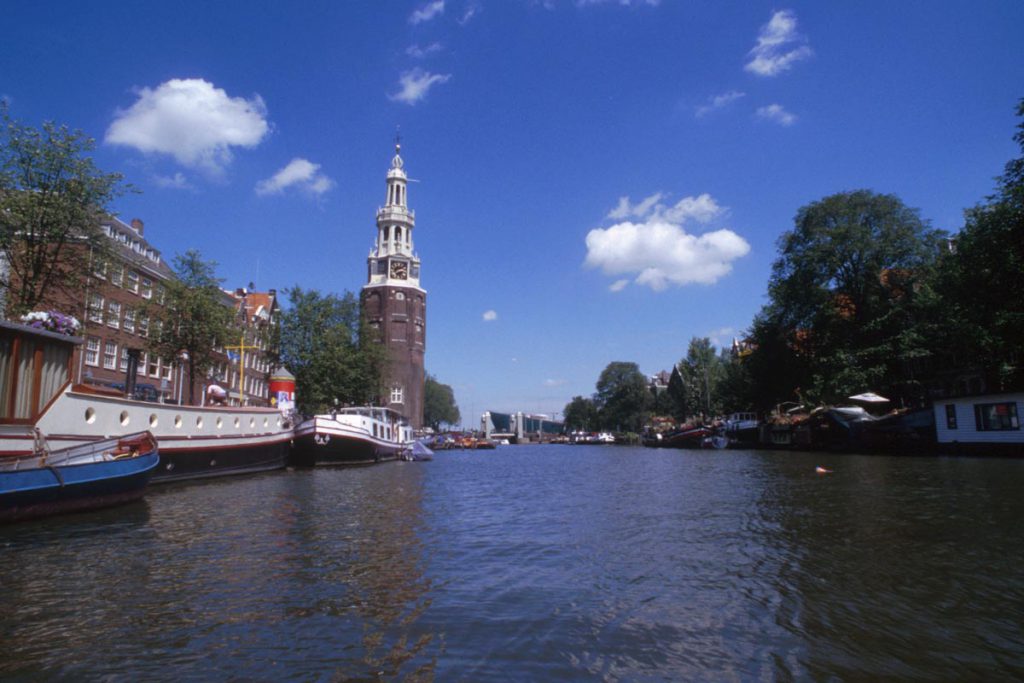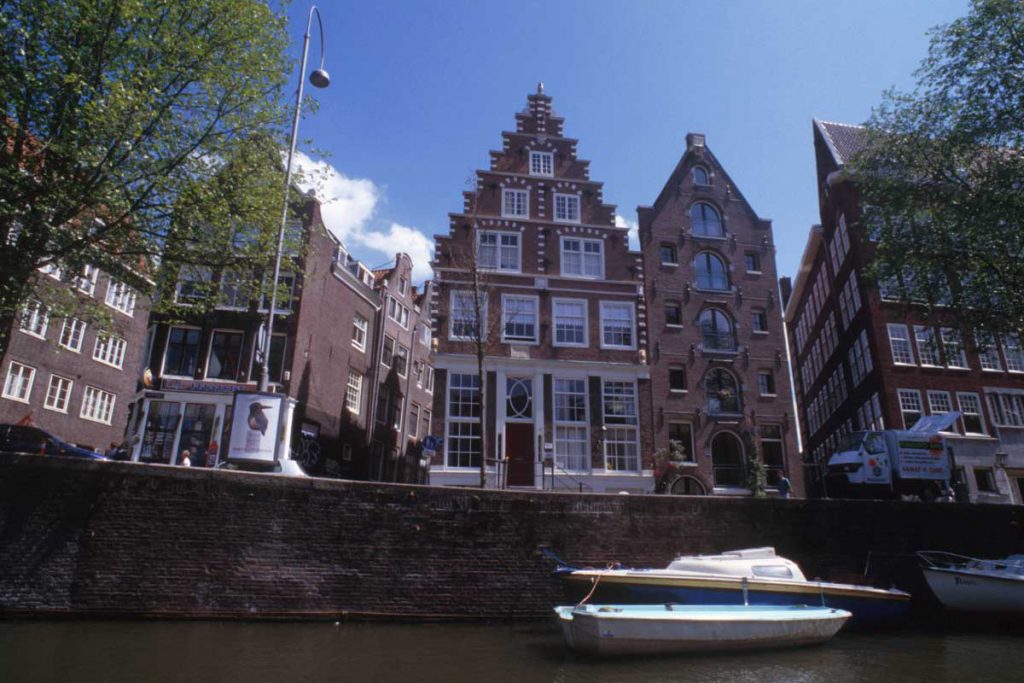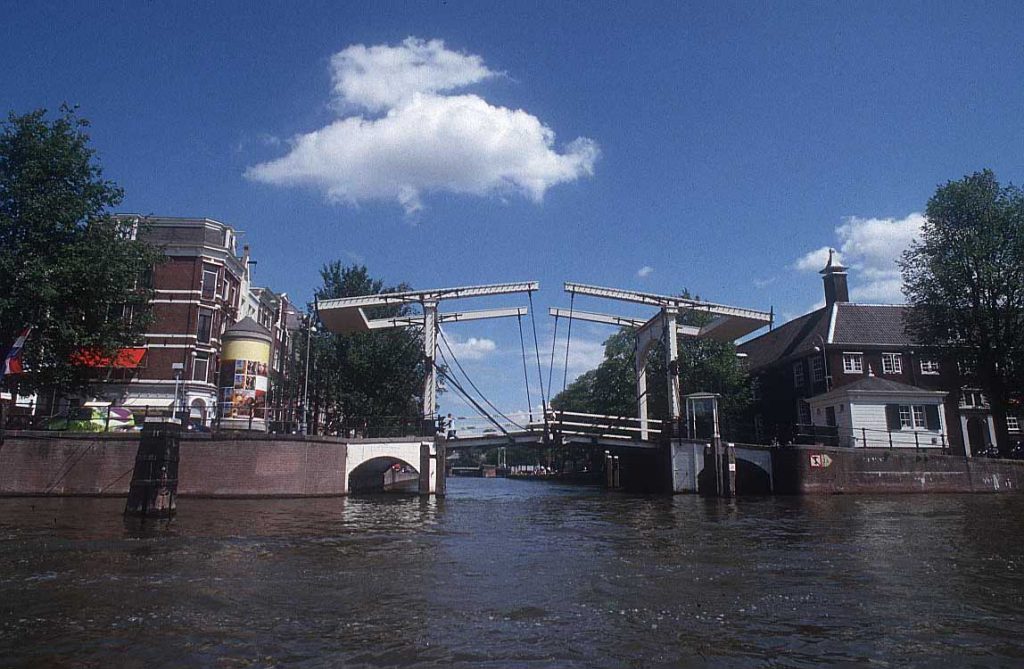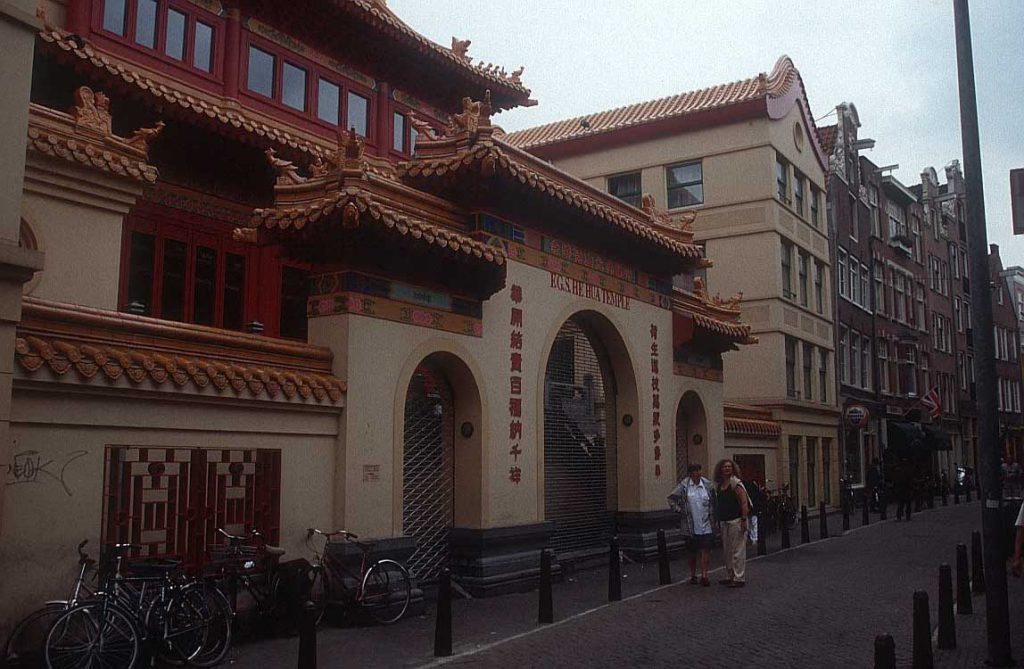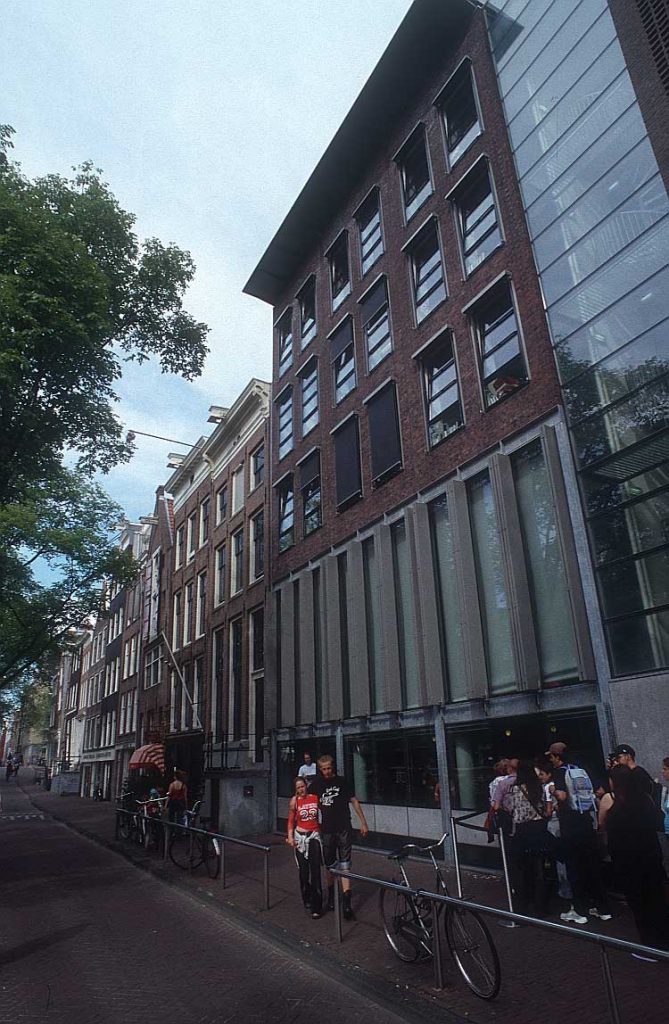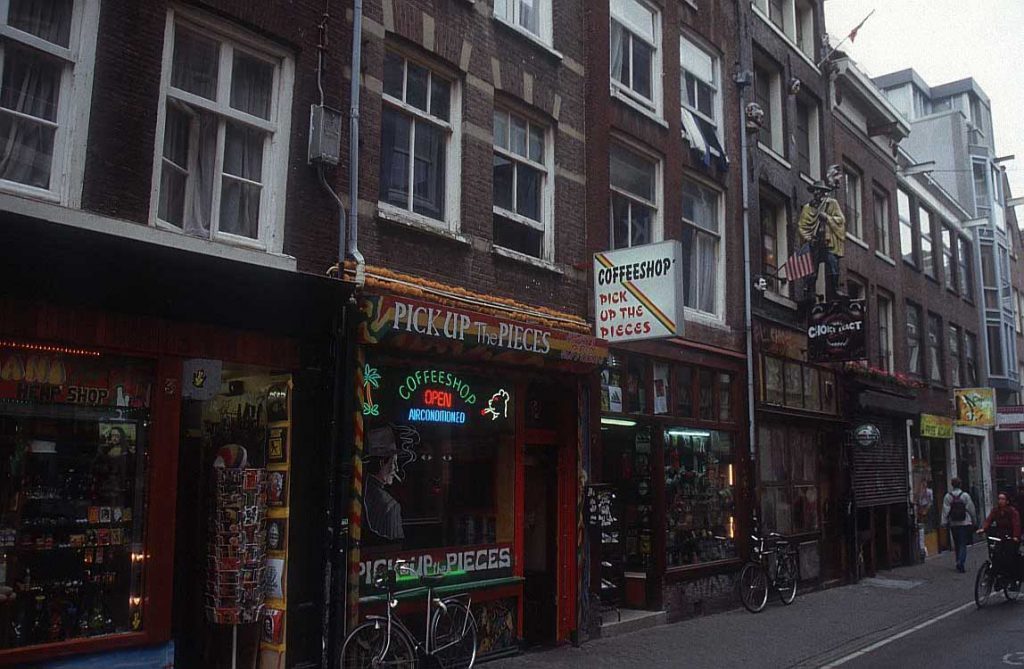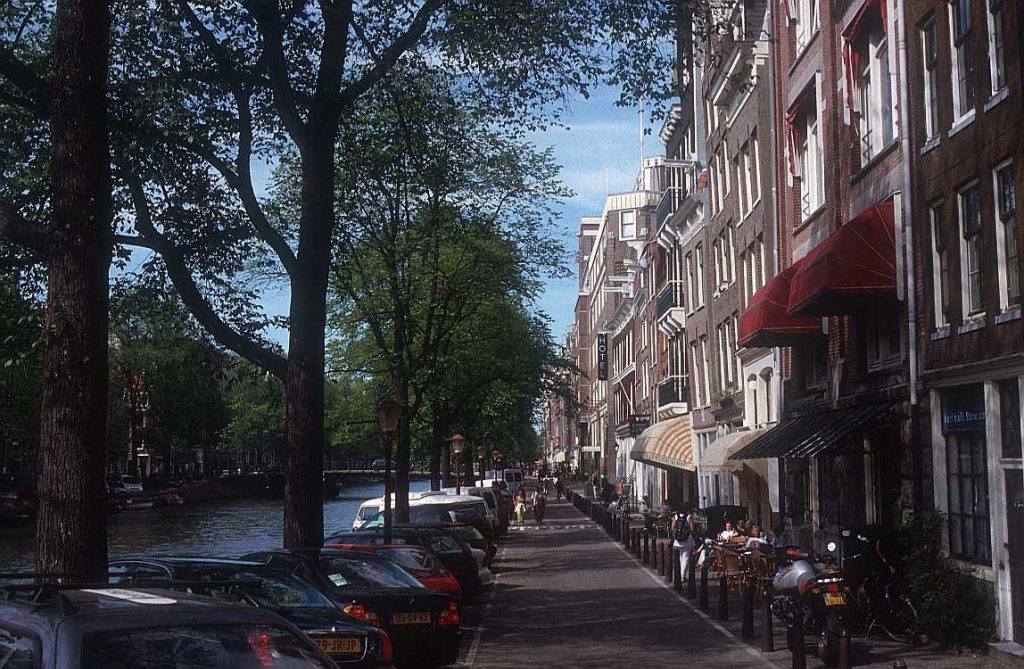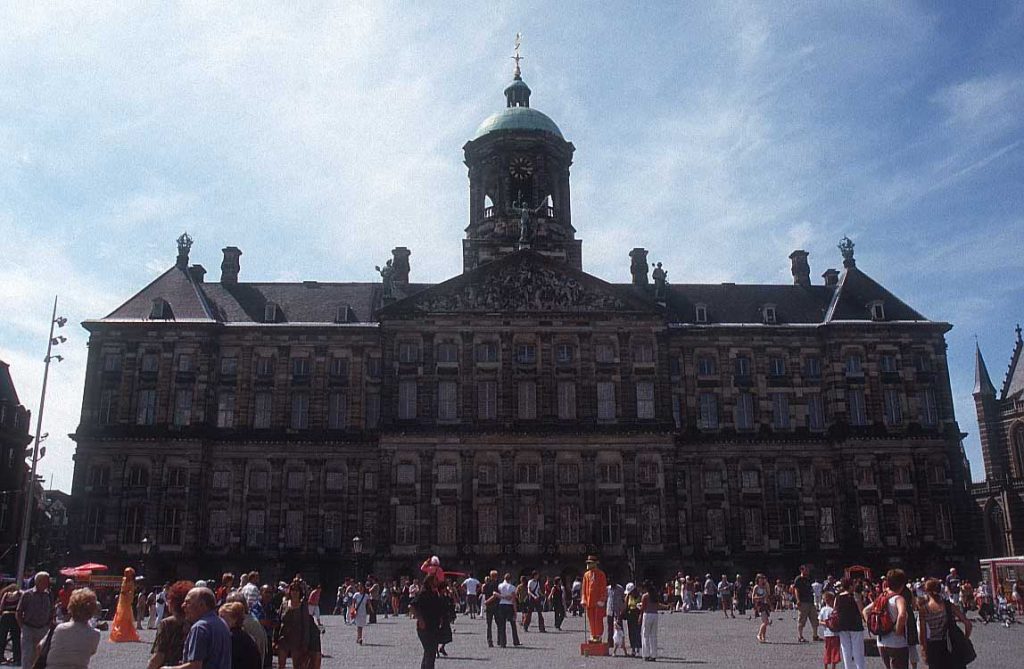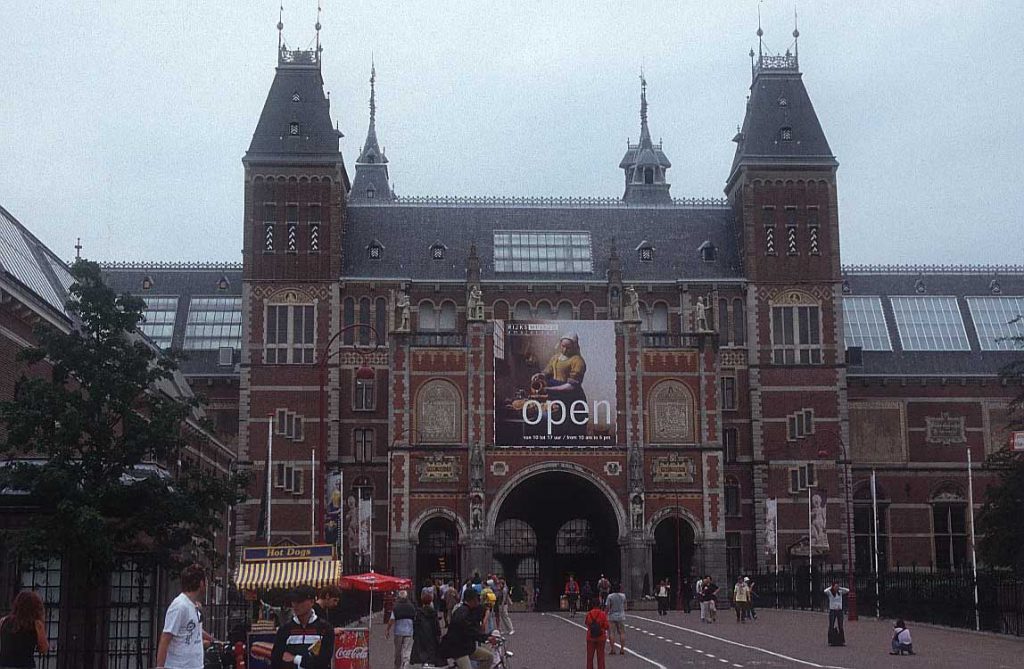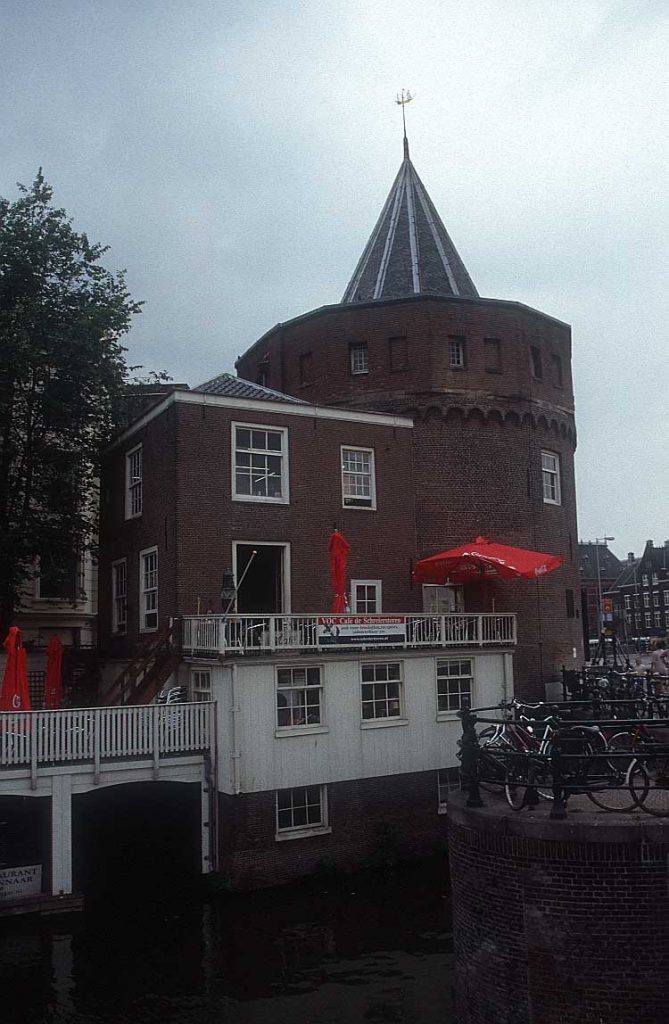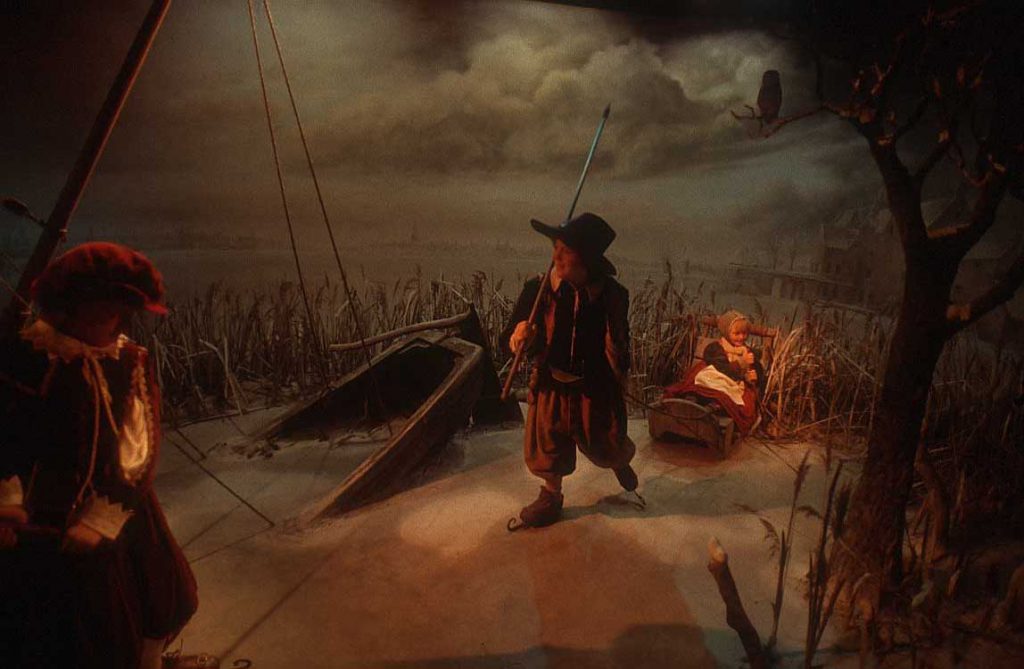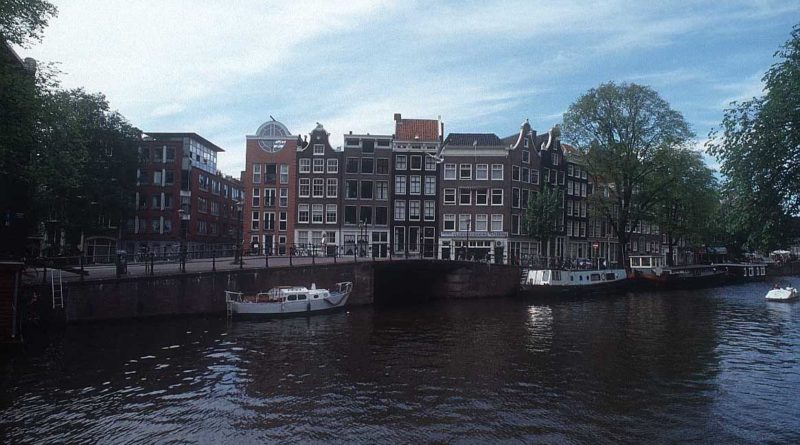Amsterdam
Amsterdam, the capital of the Netherlands, is among the world’s finest and most interesting cities. It derives its specific character from numerous canals and historical monuments. Most of the 7,000 monuments date from the ‘Golden Age’ in the 17th century, when trade brought great affluence to the city. Amsterdam is often referred to as one of the most colourful cities in the world as these pictures show.
The Royal Palace is located on the Dam in Amsterdam. It was built 350 years ago as the City Hall of Amsterdam. It is not Queen Beatrix’s place of residence but she occasionally receives important guests there.
In Madame Tussauds Amsterdam you can meet famous Dutch and foreign personalities. There are 130 life-like wax figures on display.
The Rijksmuseum is sometimes called Holland’s treasure trove. The largest museum for art and history in the Netherlands, is world famous for its collection. The Rijksmuseum has five departments: Paintings, Sculpture and Applied Arts, Print Cabinet, Asian Art and Dutch History. The centrepiece of the collection is the renowned paintings from Holland’s Golden Age. Here you will find works by Vermeer, Frans Hals, Jan Steen and Rembrandt.
Van Gogh Museum: There is no other place in the world where you can see so many of Vincent van Gogh’s paintings under one roof. The Museum is situated on the Museumplein in Amsterdam, between the Rijksmuseum and the Stedelijk Museum.
Beurs (Exchange). The renowned Amsterdam architect H.P. Berlage designed the Beurs in 1903, better known to the Amsterdammers as “Beurs van Berlage.” With its sober, brick facades, its restrained ornamentation and its iron roof, the Beurs marks the beginning of modern architecture in Holland.
The Anne Frank House is situated in the centre Amsterdam: the hiding place where Anne Frank wrote her famous diary during World War II. If this exhibition impresses you with the humanity and immense bravery of those Dutch citizens who risked their own lives hiding Jews during the Second World War, you won’t want to miss the less well known but fascinating Dutch Resistance Museum (Amsterdams Verzetsmuseum). Although a little less central (take the no. 9 tram from Central Station and get off at the zoo), it is well worth the effort to learn so much about life in Holland under the Nazi occupation. There is a café and shop in the museum. (Opens daily but not till 10.00 Tuesday to Friday and not till 11.00 Saturday to Monday.)
Where to stay
Amsterdam must have one of the widest choices of accommodation of any city in the world, and all budgets and tastes are catered for. If you ever decide to move to Amsterdam and you need help, you can contact the experts from BloklandVerhuizingen website and they can do the tough job for you. Some of the really cheap hotels and hostels are of poor quality, and it is advisable to read some reviews before you book. The 2-star Alp Hotel is right in the centre and offers 16 en-suite rooms, some with a balcony. There is no restaurant, but the hotel gives you free hot drinks and fruit all day, and there are cafes and restaurants nearby. You can walk from here to many of the museums mentioned above. Similarly handy for the museum district and next to the Vondelpark is the 3-star Hotel Parkview. There is breakfast available in the lounge, and again there are cafes and restaurants nearby. The hotel has free Wifi. In the 4-star category, try the highly rated Hotel Estherea, a boutique hotel on the Singel Canal, in a quiet area but still in the centre of the city. Some rooms have a canal view, but in any case you can see the canal from the lounge, where they serve free hot drinks and will lend you an iPad free of charge during your stay (but Wifi is only free in the lobby). Finally, and also in the canal district, is the 5-star ‘lifestyle hotel’ Andaz Amsterdam Prinsengracht (a Hyatt Hotel). All 122 rooms have been individually designed and offer the usual luxurious extras that you would expect. The hotel offers free bikes (the way to get around in Amsterdam) and has a Spa and Wellness Centre. Unusually for some more expensive hotels, Wifi is free.
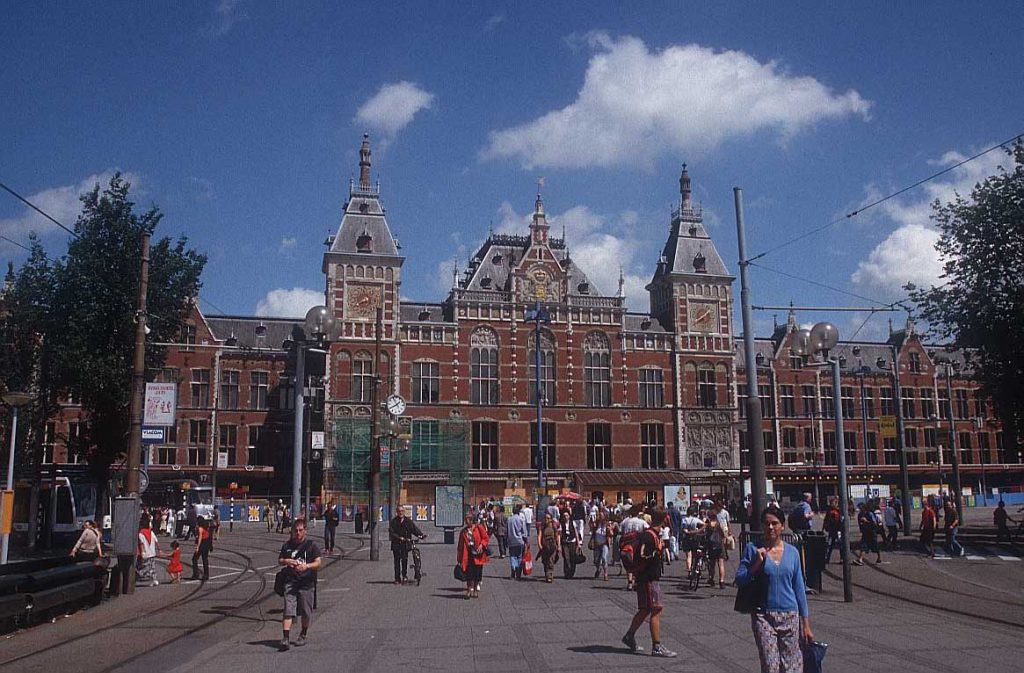
Art and History: Exploring the Treasures of the Rijksmuseum
Nestled in the heart of Amsterdam, the Rijksmuseum stands as a testament to the rich cultural heritage of the Netherlands. With its impressive collection of art, artifacts, and historical treasures spanning over eight centuries, the museum offers visitors a journey through Dutch history, art, and culture. From masterpieces by renowned painters such as Rembrandt and Vermeer to exquisite examples of decorative arts and fascinating historical artifacts, the Rijksmuseum is a treasure trove waiting to be explored.
A Glimpse into History
The history of the Rijksmuseum dates back to the early 19th century when King Louis Napoleon of Holland established the Royal Museum in 1800. However, it wasn’t until 1885 that the current neo-Gothic building, designed by architect Pierre Cuypers, opened its doors to the public. With its striking façade adorned with intricate sculptures and elaborate decorations, the museum itself is a work of art.
The Masterpieces of Dutch Golden Age
One of the highlights of the Rijksmuseum is its unparalleled collection of Dutch Golden Age paintings. Among these, the works of Rembrandt van Rijn shine brightest. Rembrandt’s masterpiece, “The Night Watch,” takes center stage in the museum’s Gallery of Honour, captivating visitors with its dynamic composition and masterful use of light and shadow. Other iconic works by Rembrandt, including “The Jewish Bride” and “The Syndics of the Drapers’ Guild,” showcase his unparalleled skill in capturing the human experience with remarkable depth and emotion.
But Rembrandt is not the only luminary of the Dutch Golden Age represented in the Rijksmuseum. Johannes Vermeer, celebrated for his exquisite depictions of everyday life, is another prominent figure in the museum’s collection. “The Milkmaid” and “The Love Letter” are just two examples of Vermeer’s intimate and luminous compositions that continue to captivate audiences centuries after their creation.
Beyond Paintings: Decorative Arts and Design
In addition to its stellar collection of paintings, the Rijksmuseum boasts an impressive array of decorative arts and design objects that offer insight into Dutch craftsmanship and innovation. From delicate Delftware ceramics to luxurious silverware and intricately carved furniture, these objects reflect the skill and creativity of Dutch artisans throughout the centuries.
One of the museum’s most prized possessions is the Cabinet of Curiosities, a collection of rare and unusual objects that range from scientific instruments to exotic artifacts from distant lands. These eclectic treasures offer a glimpse into the spirit of exploration and discovery that defined the Dutch Golden Age.
Unraveling Dutch History
Beyond its artistic riches, the Rijksmuseum also serves as a repository of Dutch history, showcasing artifacts and documents that illuminate the country’s past. The museum’s collection includes historical artifacts such as armor and weaponry, as well as maps, manuscripts, and political documents that trace the evolution of the Netherlands as a nation.
Of particular note is the museum’s collection of Dutch East India Company (VOC) artifacts, which provides insight into the Dutch Republic’s global maritime trade network during the 17th and 18th centuries. Model ships, navigational instruments, and exotic goods from distant lands offer a window into the Dutch Golden Age’s spirit of exploration, trade, and cultural exchange.
A Cultural Oasis in Amsterdam
In addition to its permanent collection, the Rijksmuseum also hosts temporary exhibitions that showcase a diverse range of art and cultural experiences. From contemporary photography to innovative design, these exhibitions offer visitors fresh perspectives on Dutch culture and creativity.
The museum’s beautifully landscaped gardens and outdoor sculptures provide a tranquil retreat from the hustle and bustle of Amsterdam’s city streets, inviting visitors to relax and reflect amidst the beauty of nature and art.
Preserving the Past for Future Generations
As custodians of one of the world’s most significant cultural heritage collections, the Rijksmuseum is committed to preserving its treasures for future generations. Through ongoing conservation efforts and research initiatives, the museum ensures that its artworks and artifacts remain accessible and relevant to audiences around the globe.
Moreover, the museum’s digital initiatives, including online collections and virtual tours, enable people from all walks of life to engage with Dutch art and history from anywhere in the world, fostering greater understanding and appreciation of the Netherlands’ rich cultural heritage.
The Rijksmuseum stands as a beacon of Dutch art, history, and culture, inviting visitors on a journey through time and imagination. From the grandeur of the Dutch Golden Age to the intricacies of everyday life, the museum’s collection offers a multifaceted exploration of the Netherlands’ rich and vibrant past.
Whether you’re a seasoned art enthusiast or a curious traveler, a visit to the Rijksmuseum is sure to leave an indelible impression, inspiring awe and wonder at the enduring legacy of Dutch creativity and innovation. As the guardian of this cultural treasure, the Rijksmuseum continues to serve as a source of inspiration and enlightenment for generations to come.
